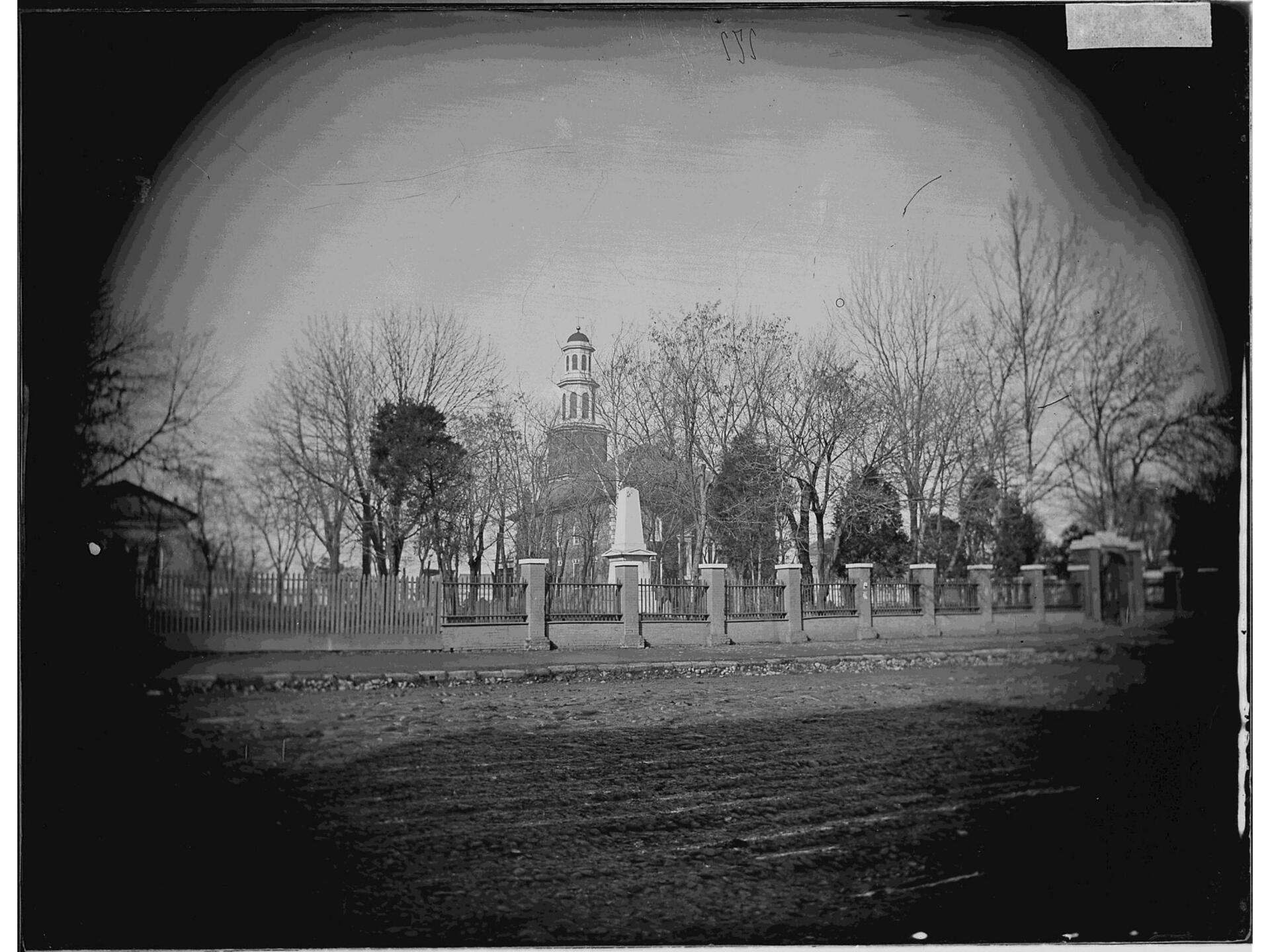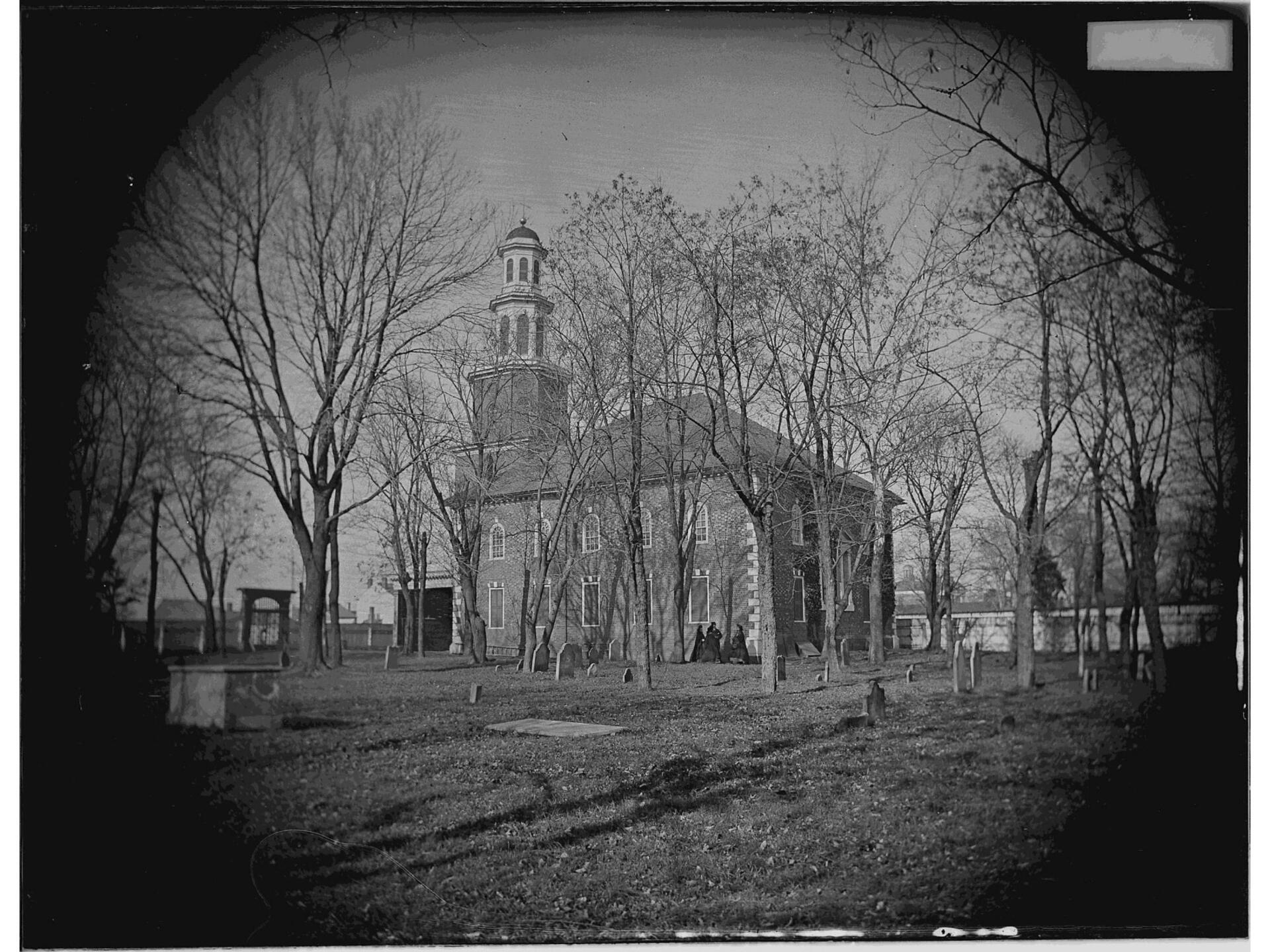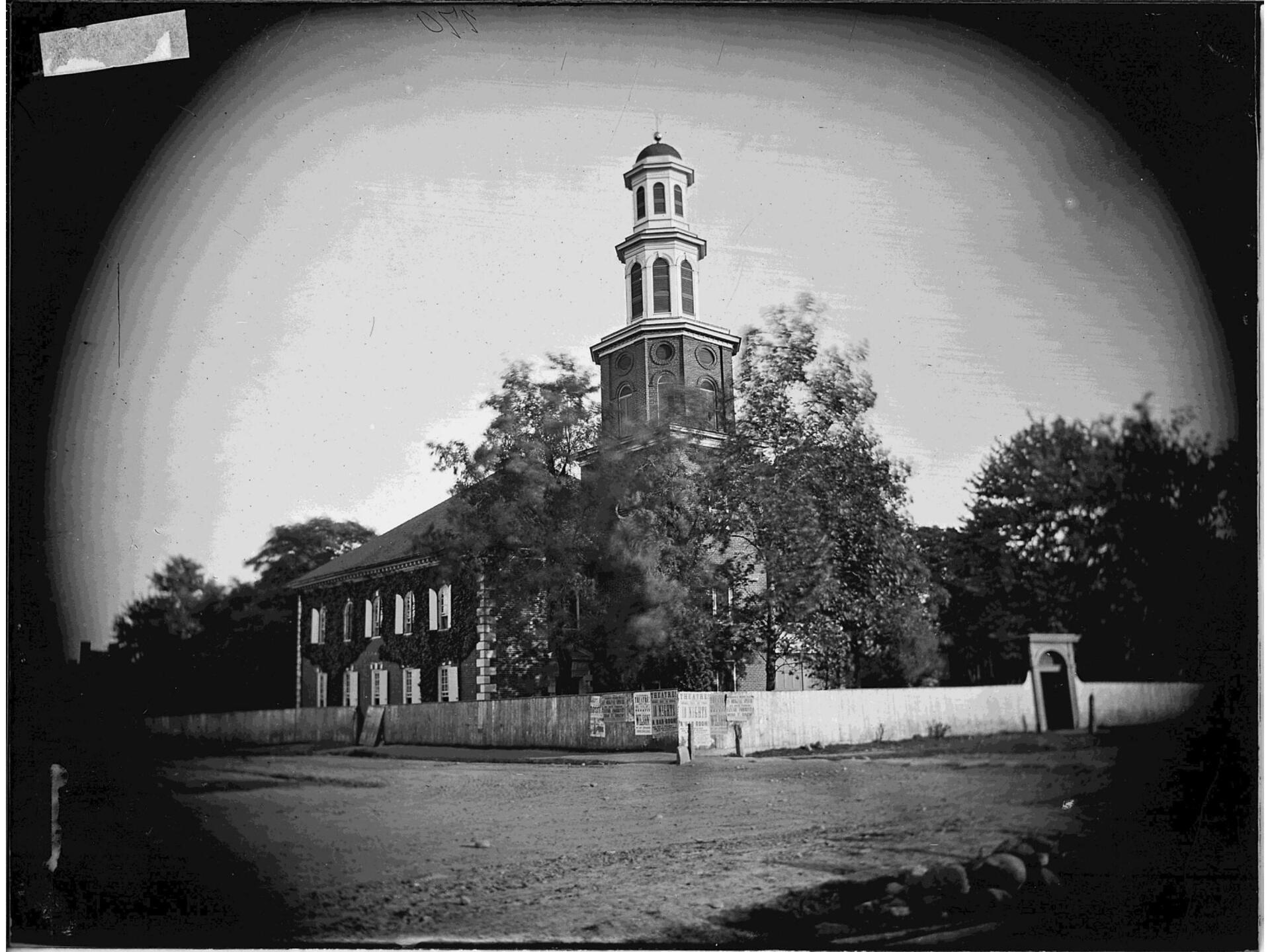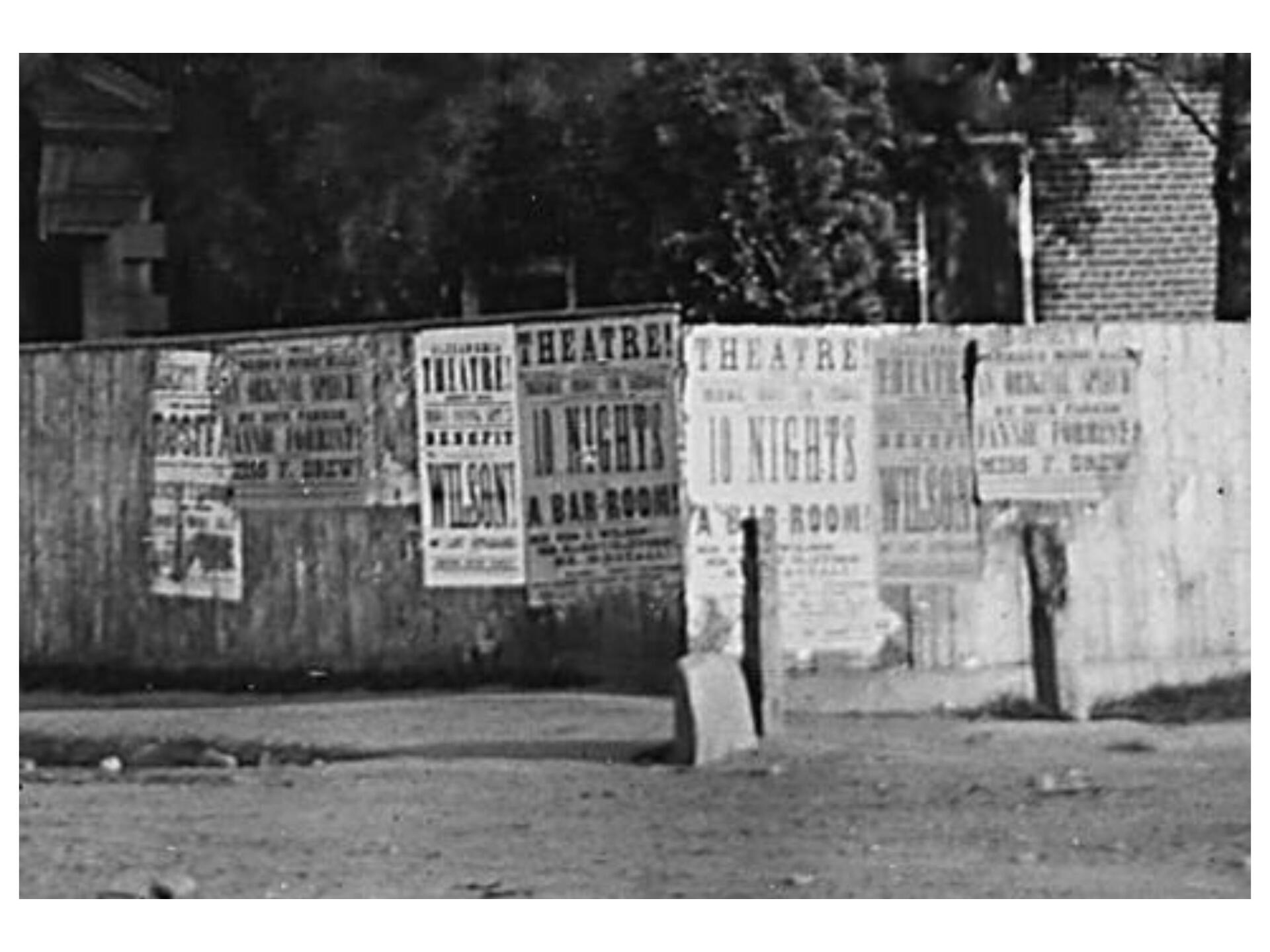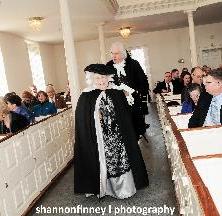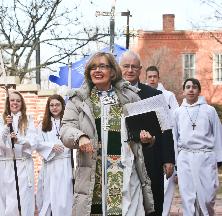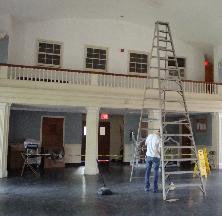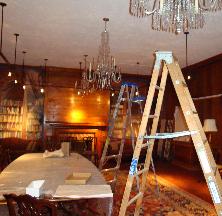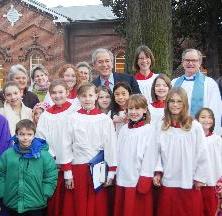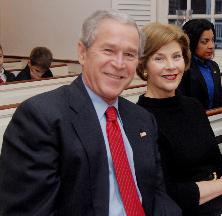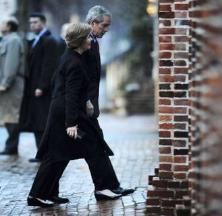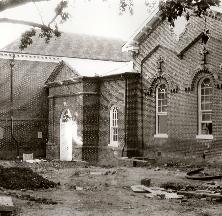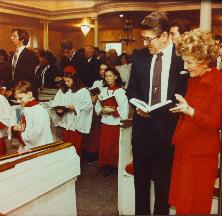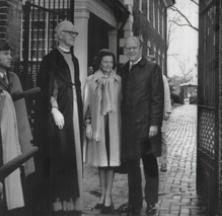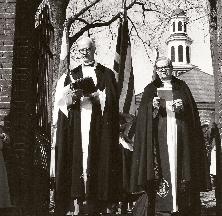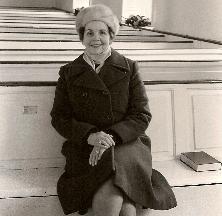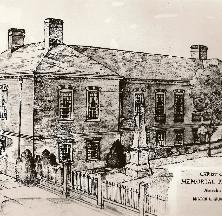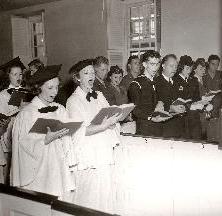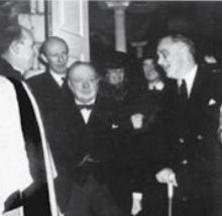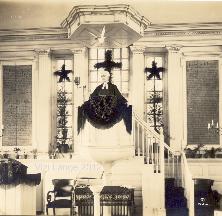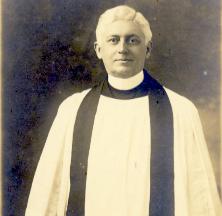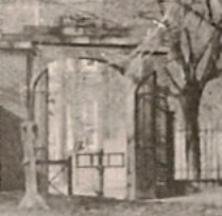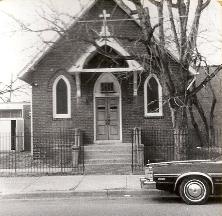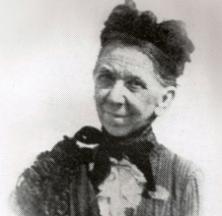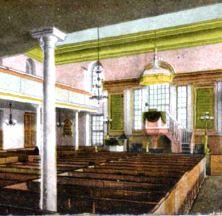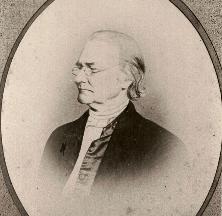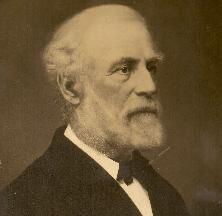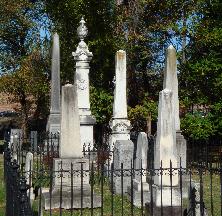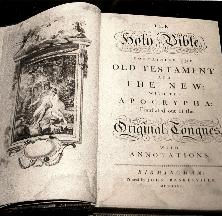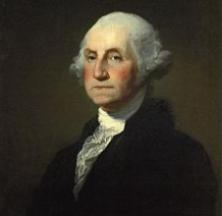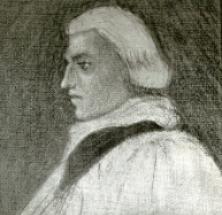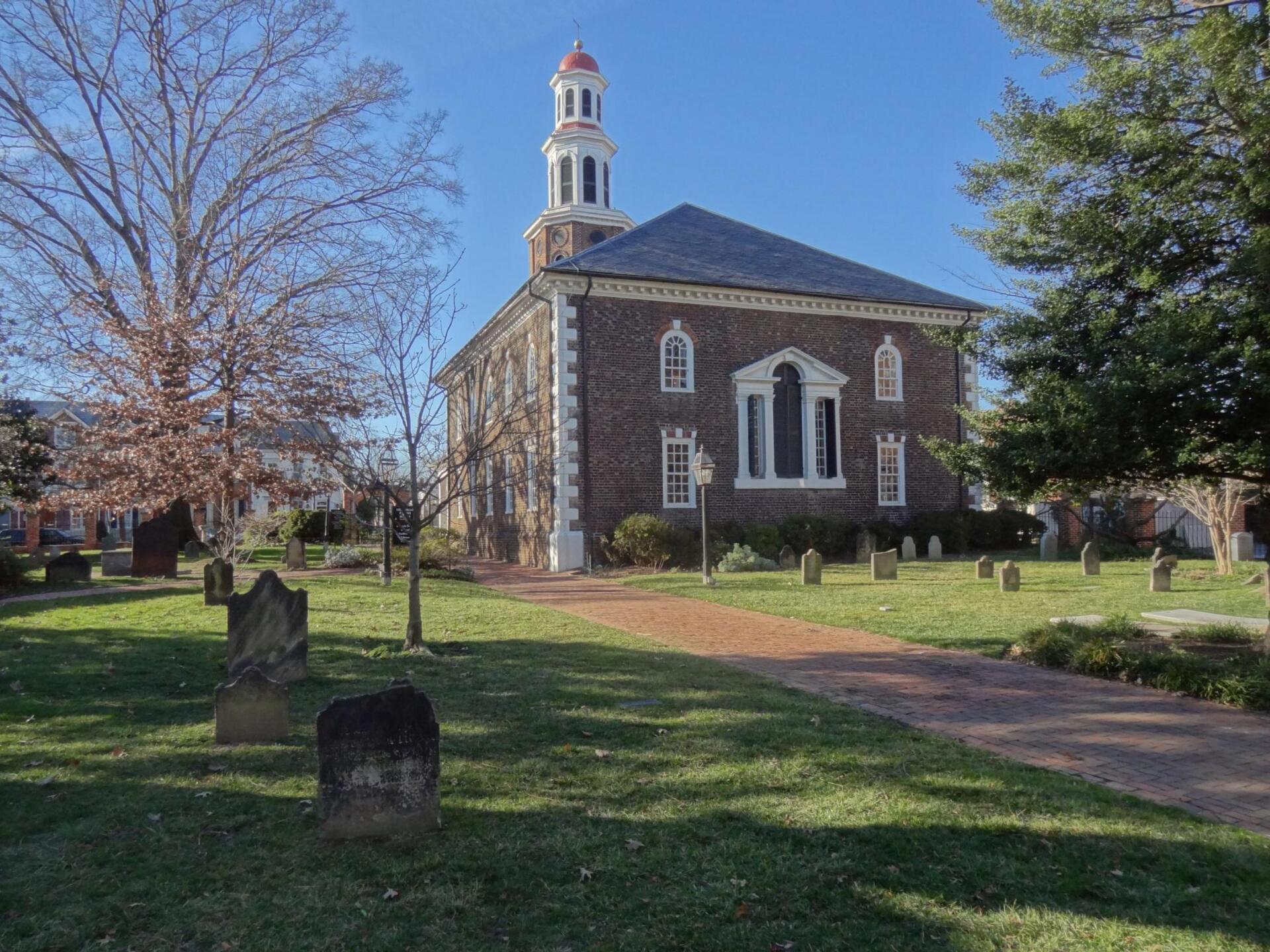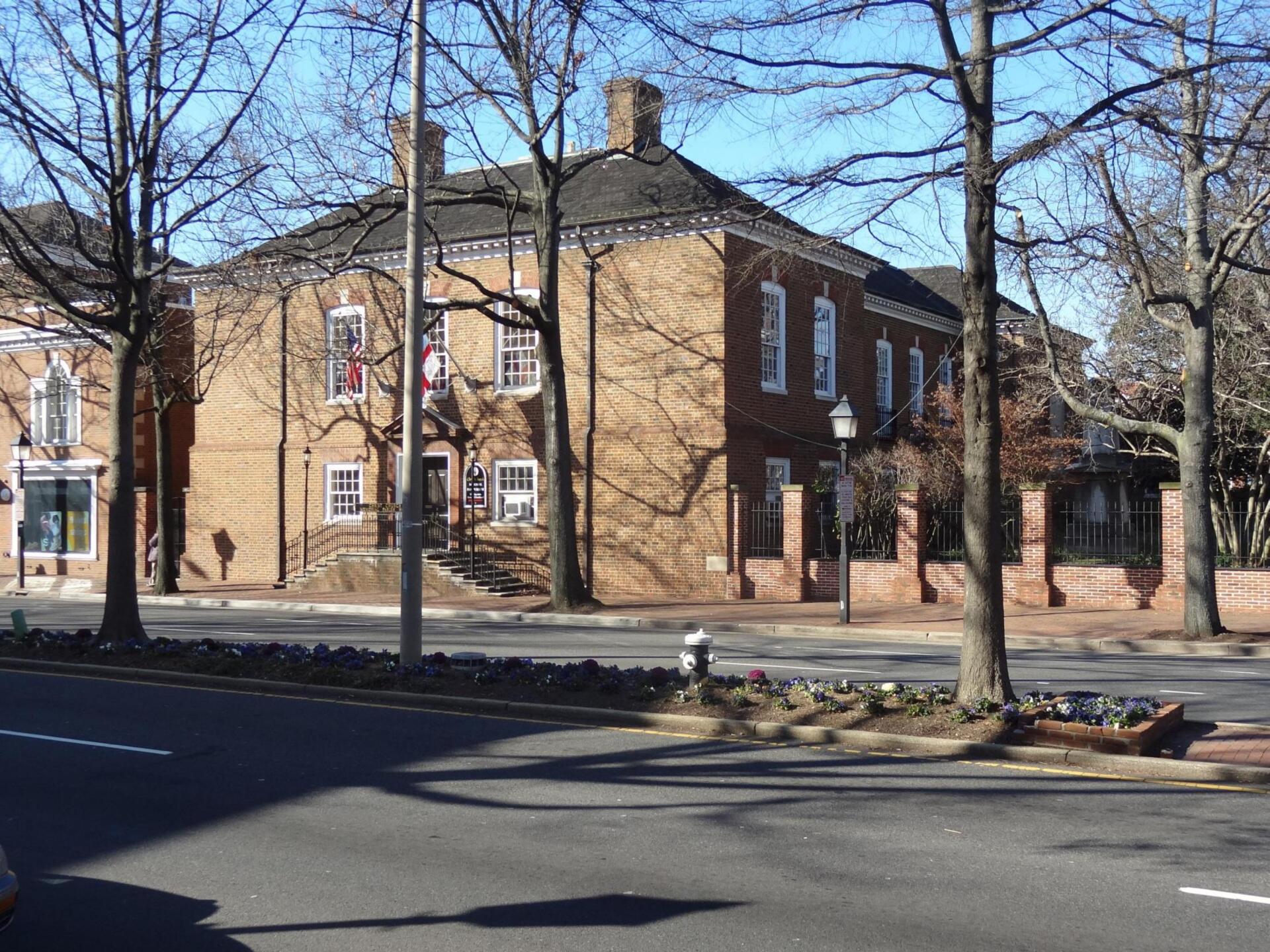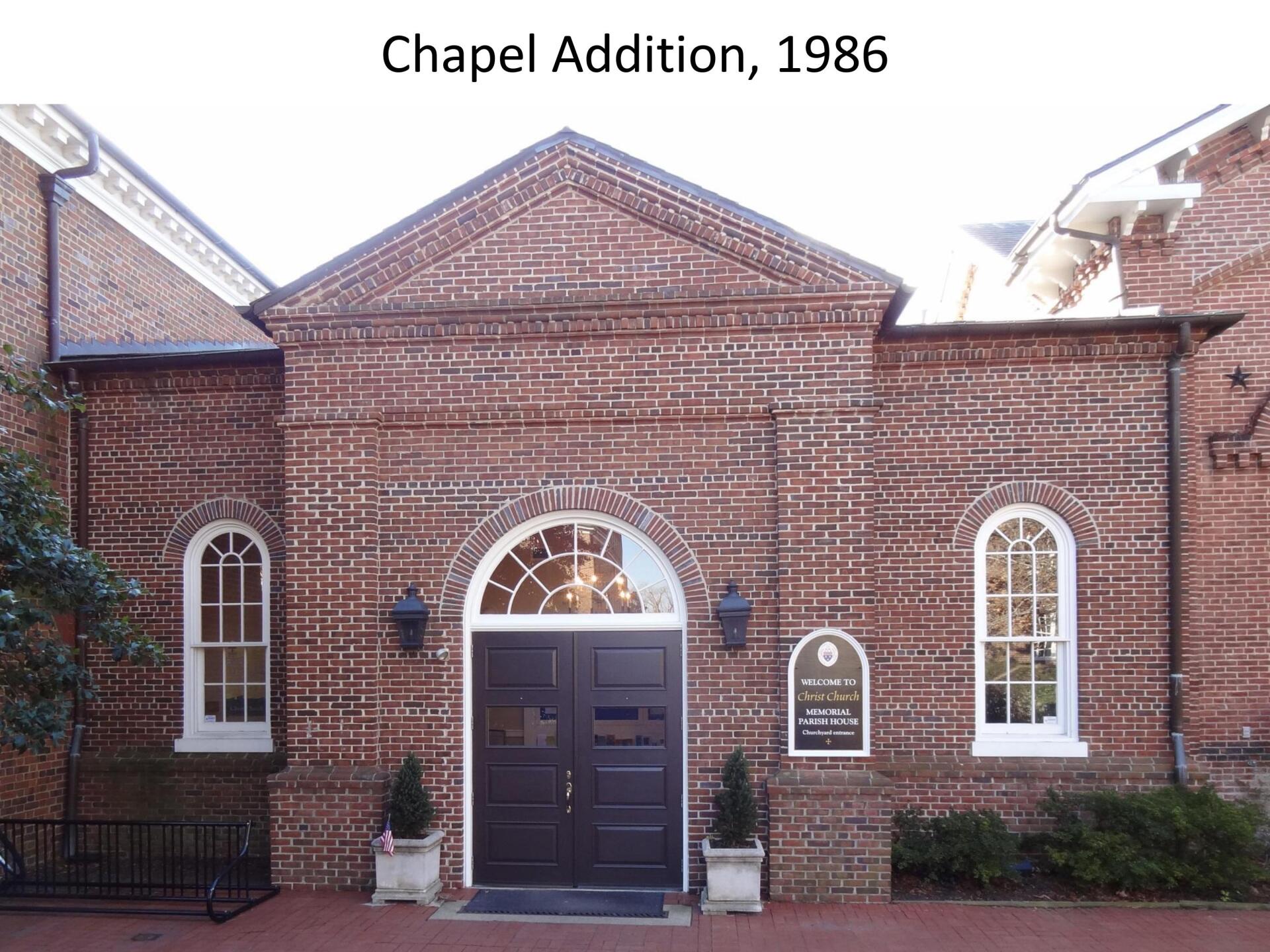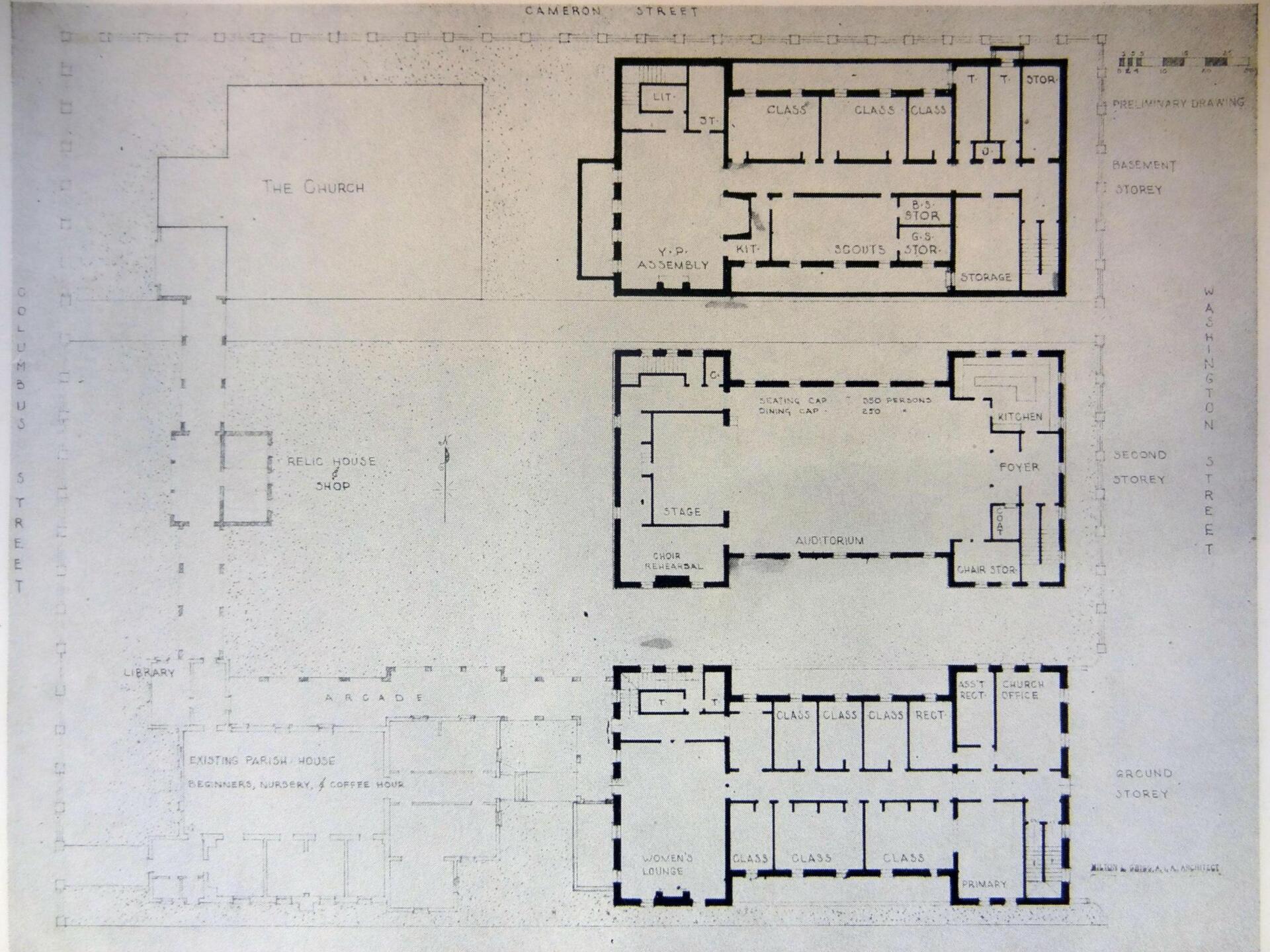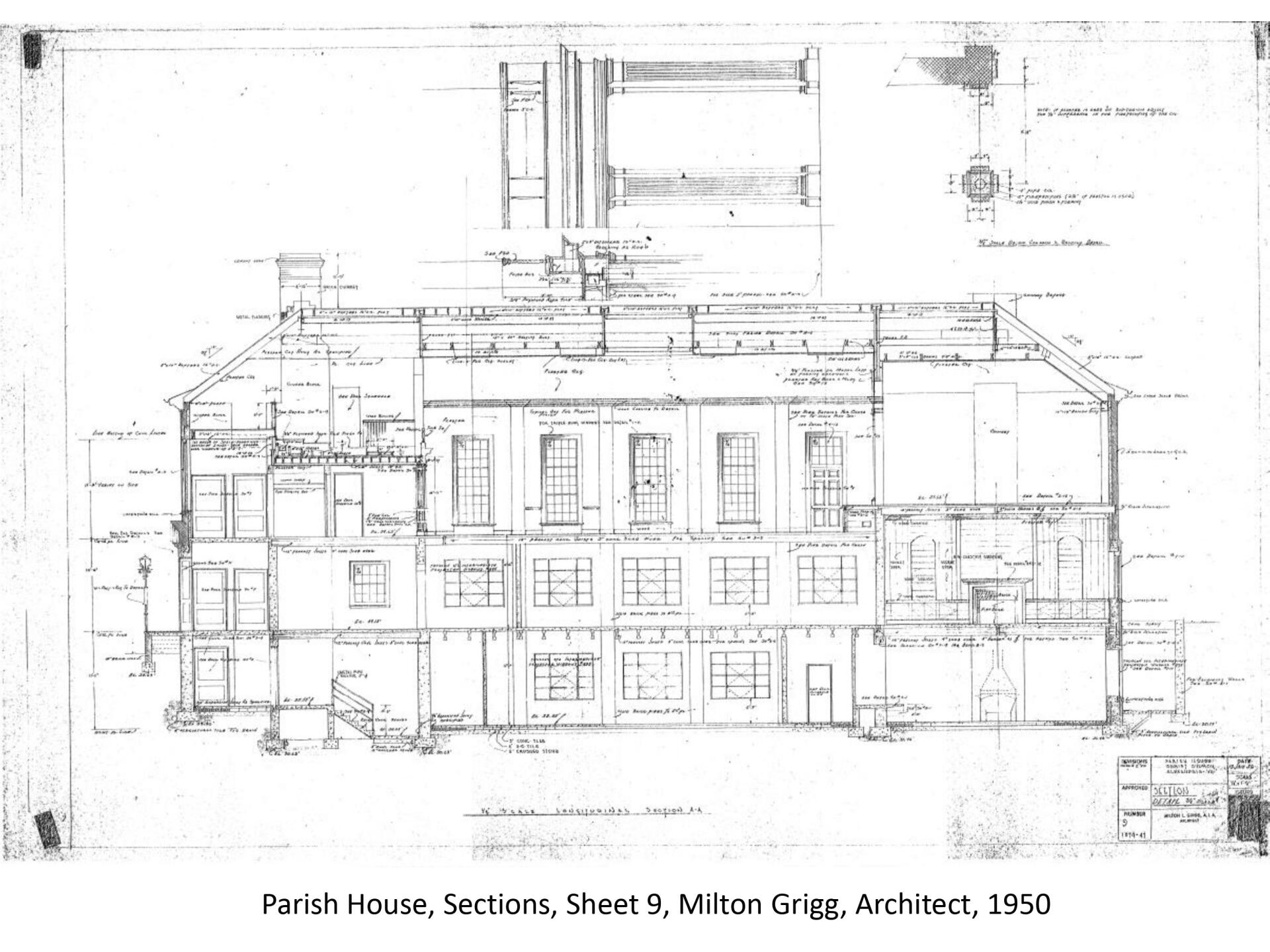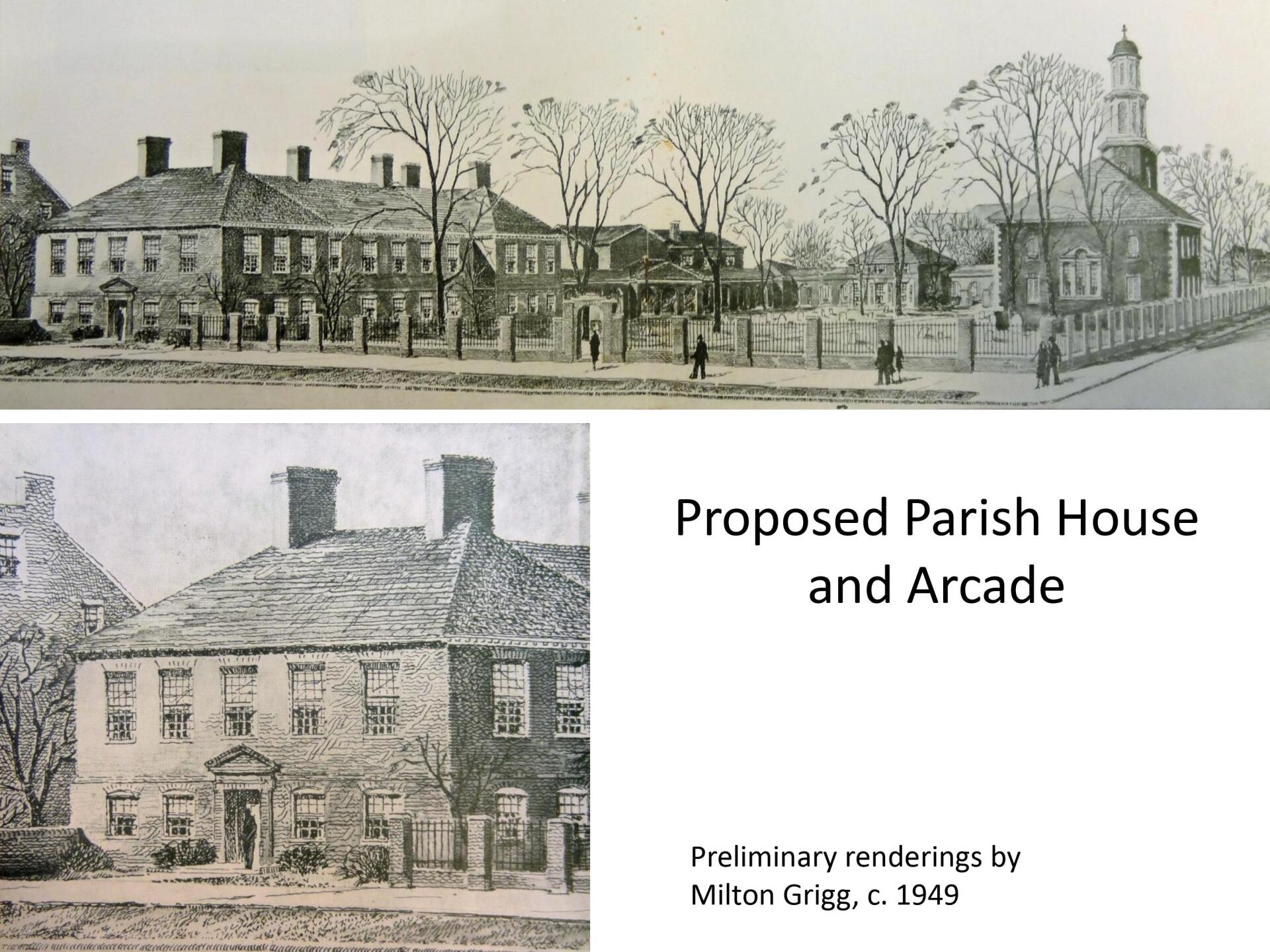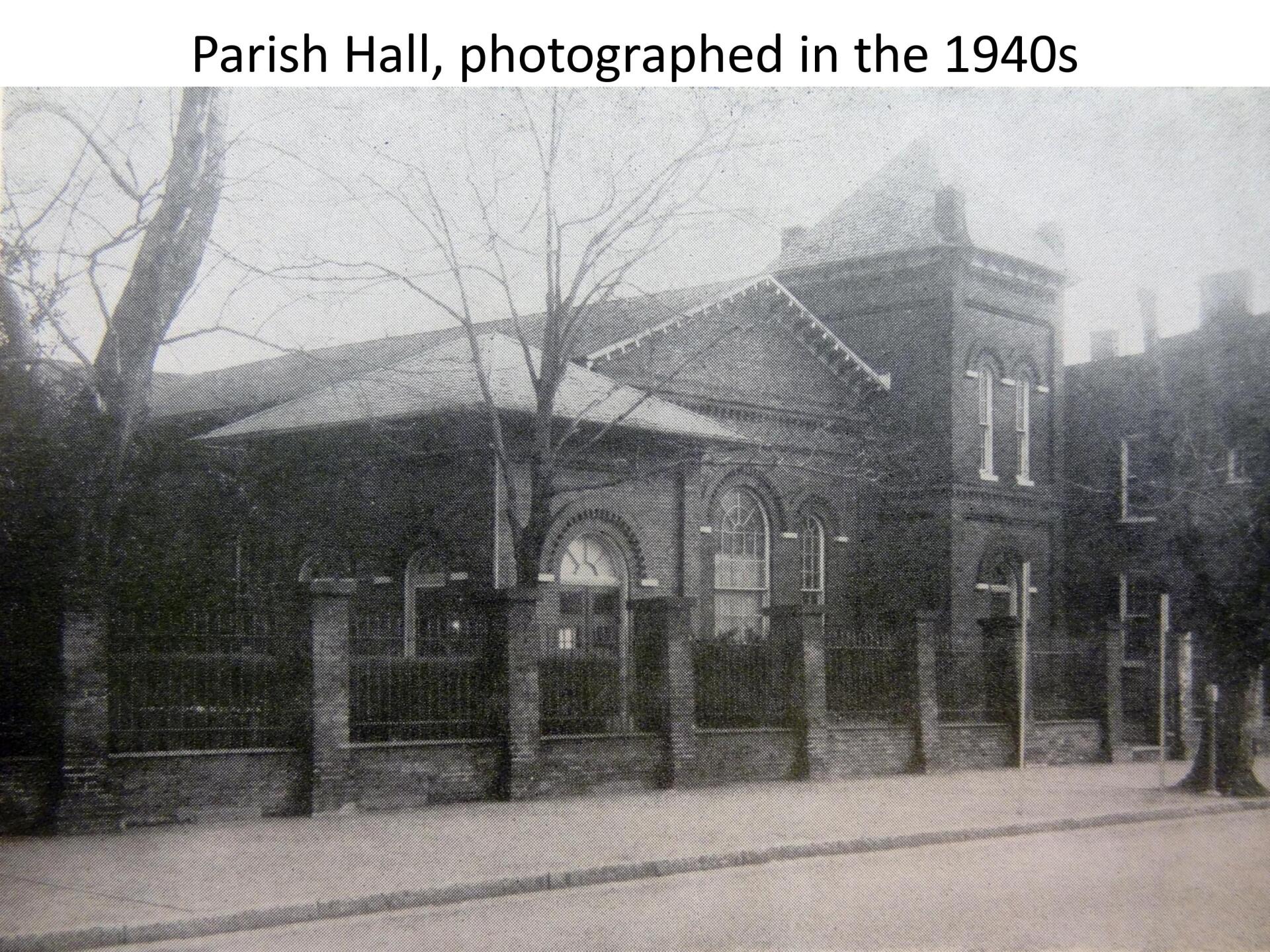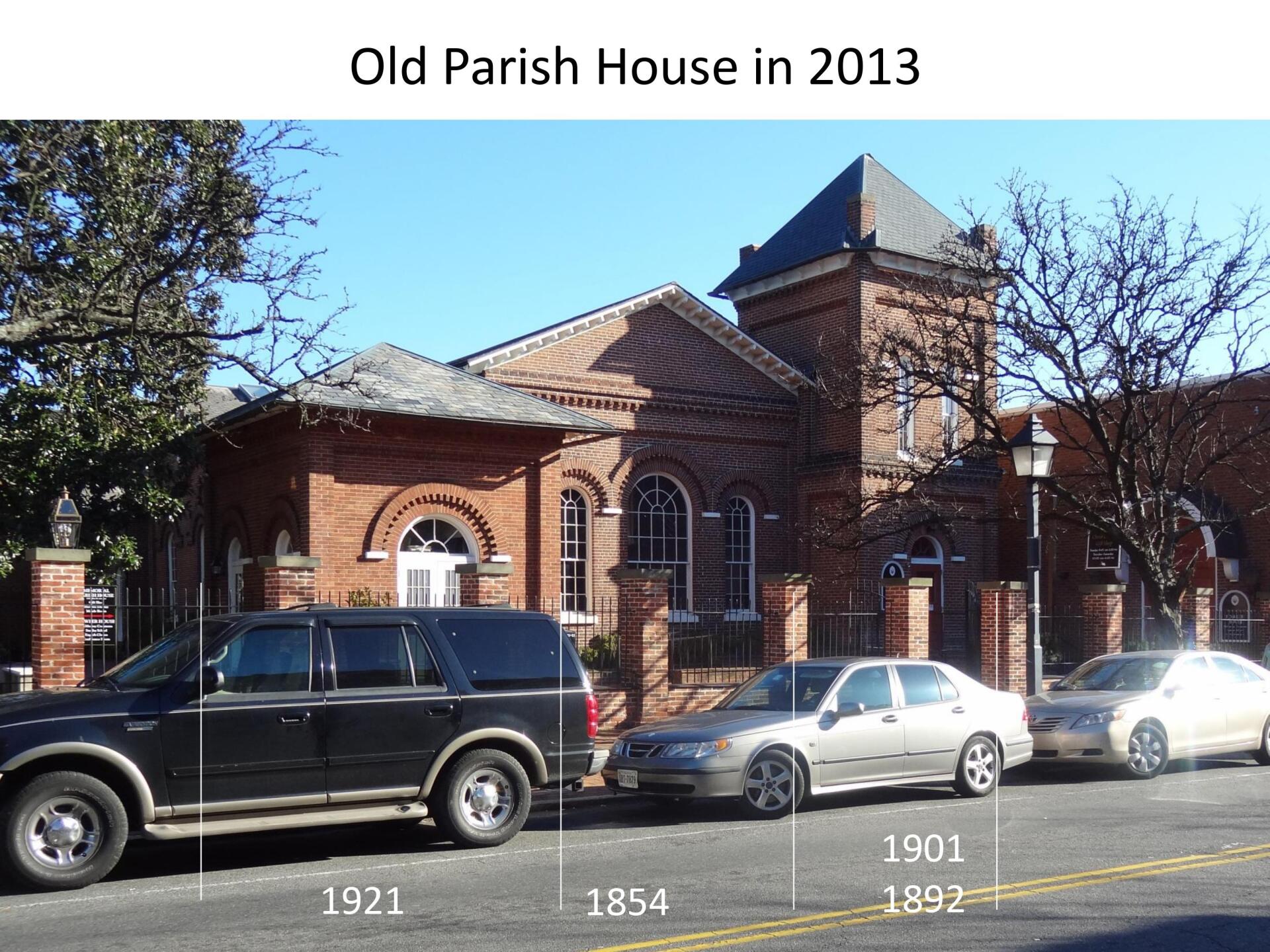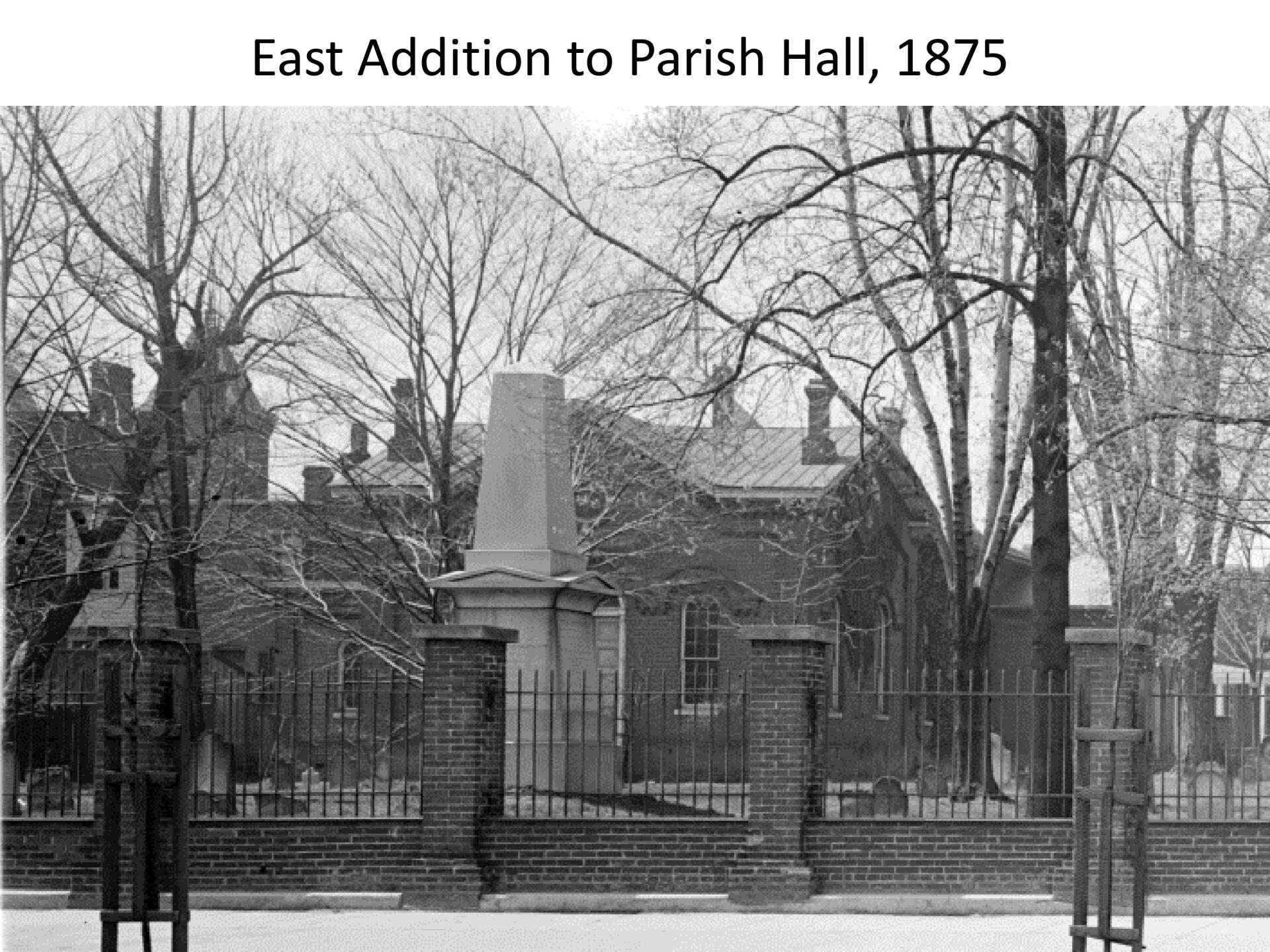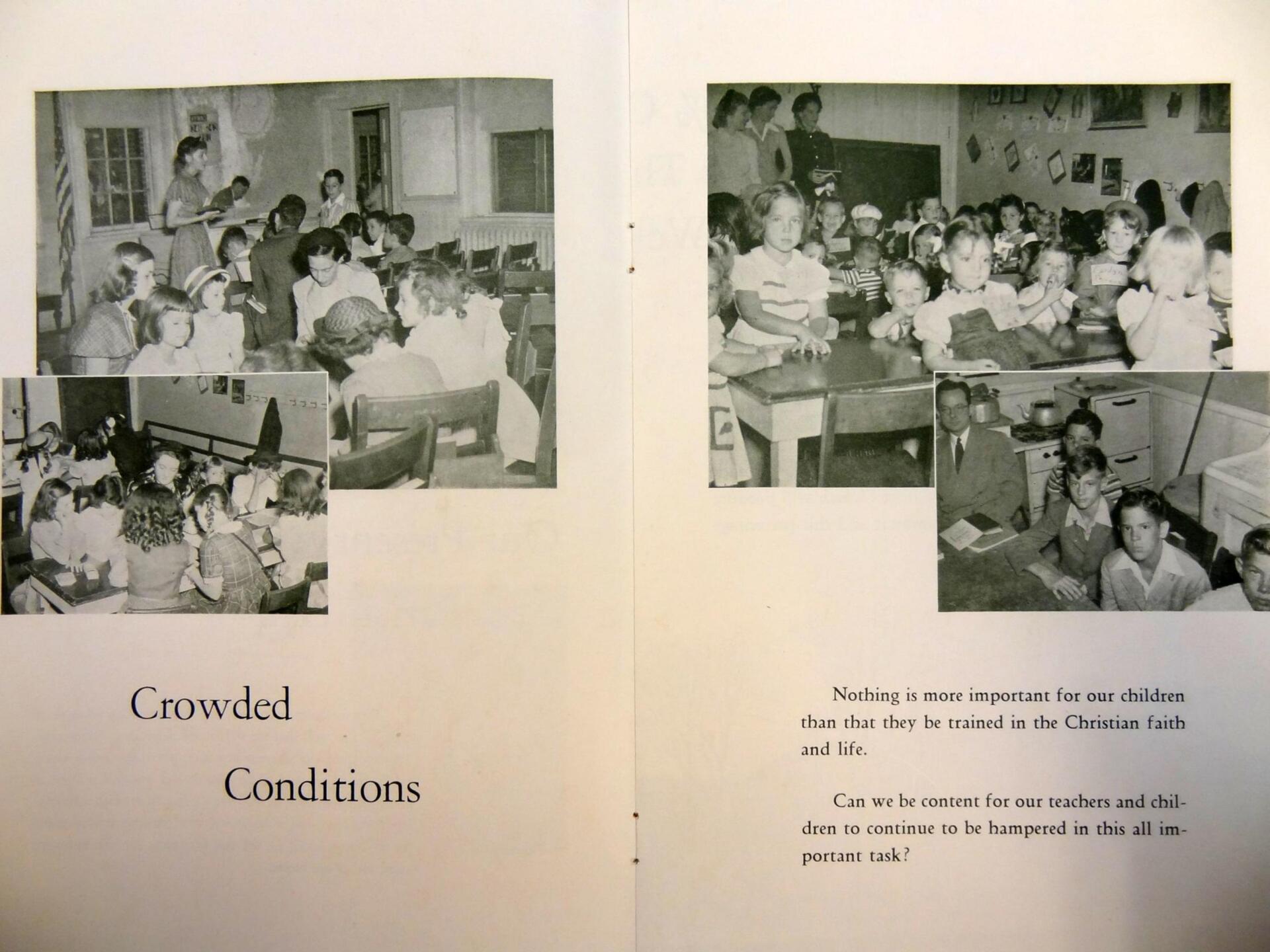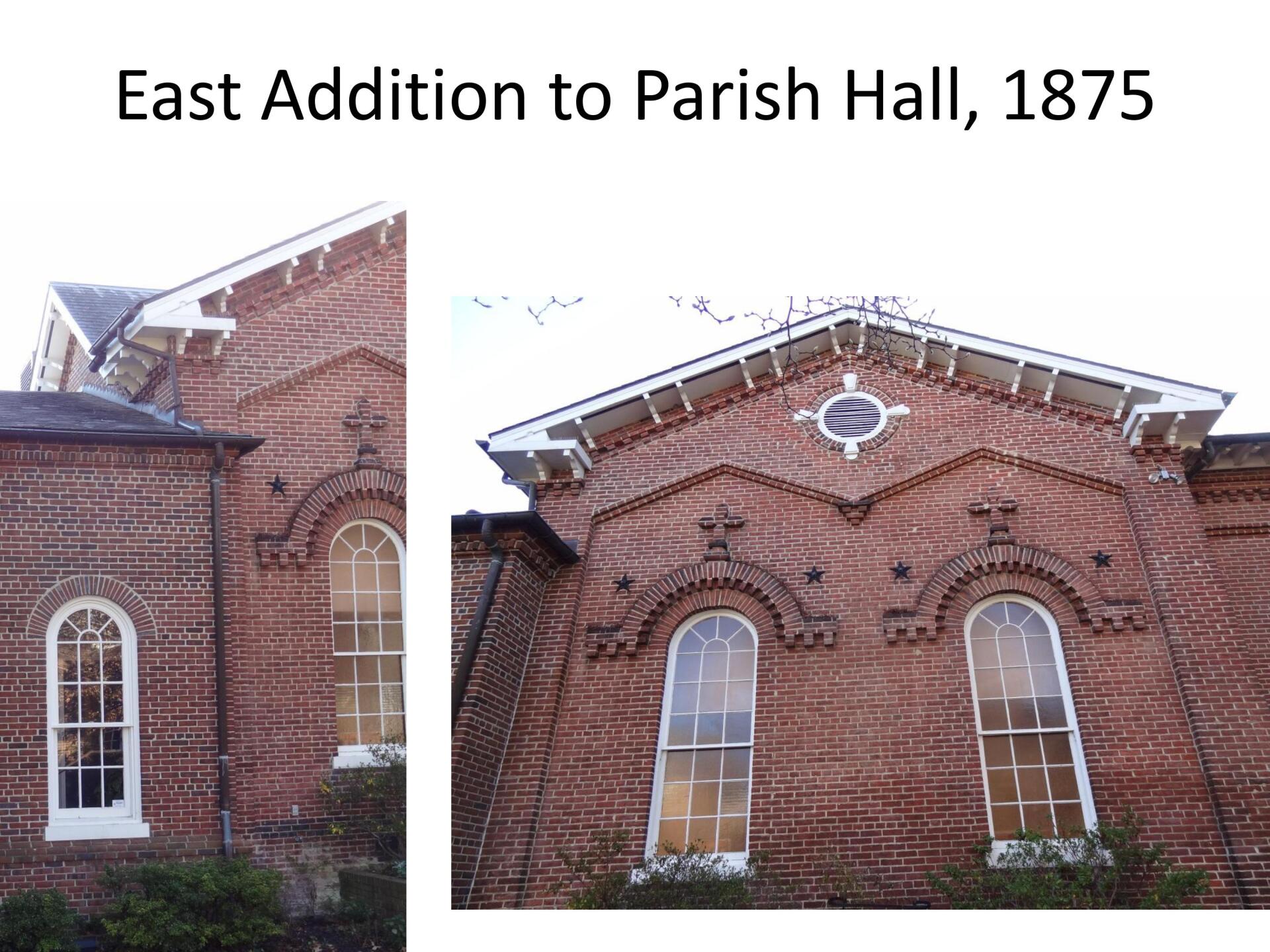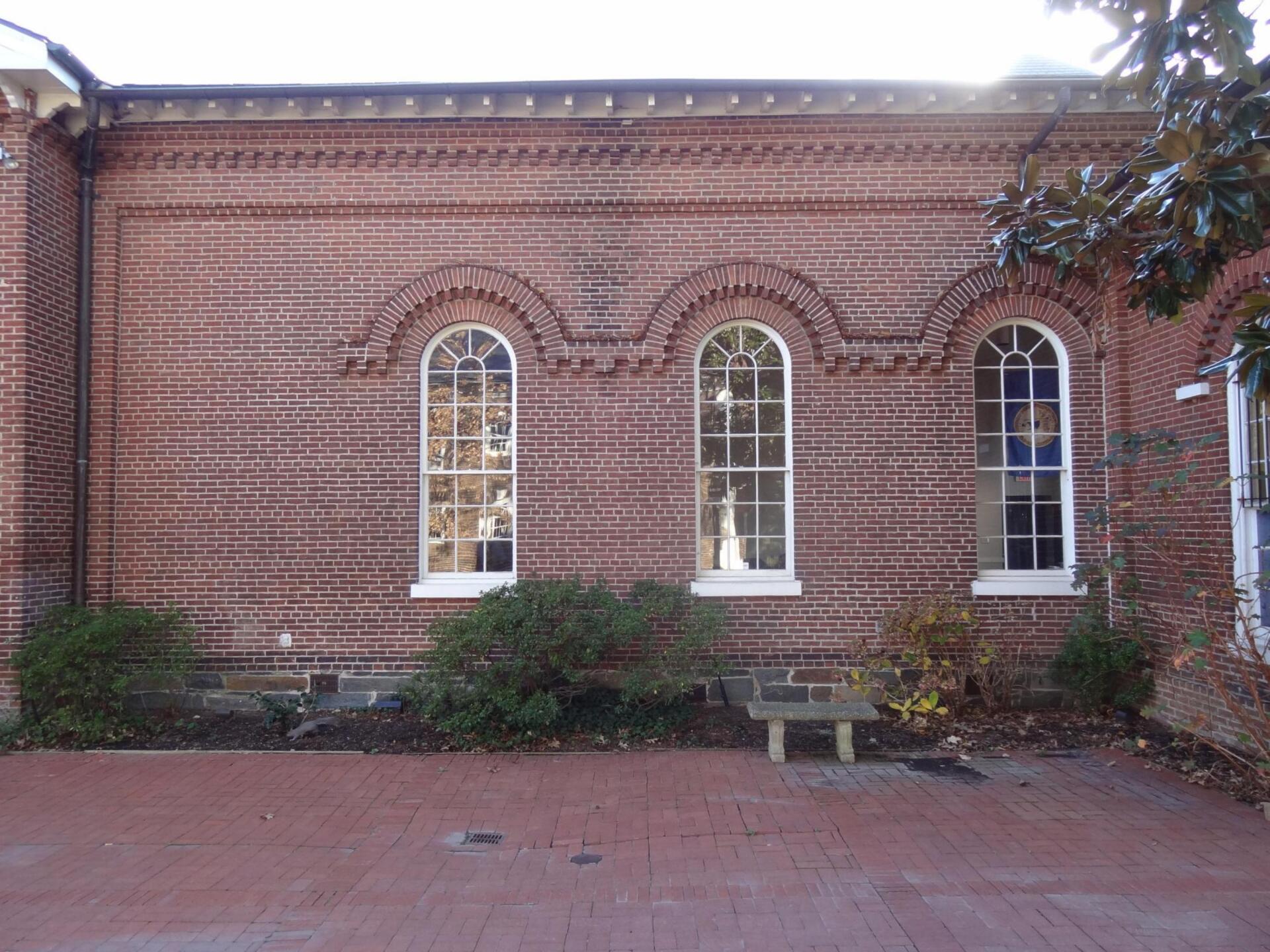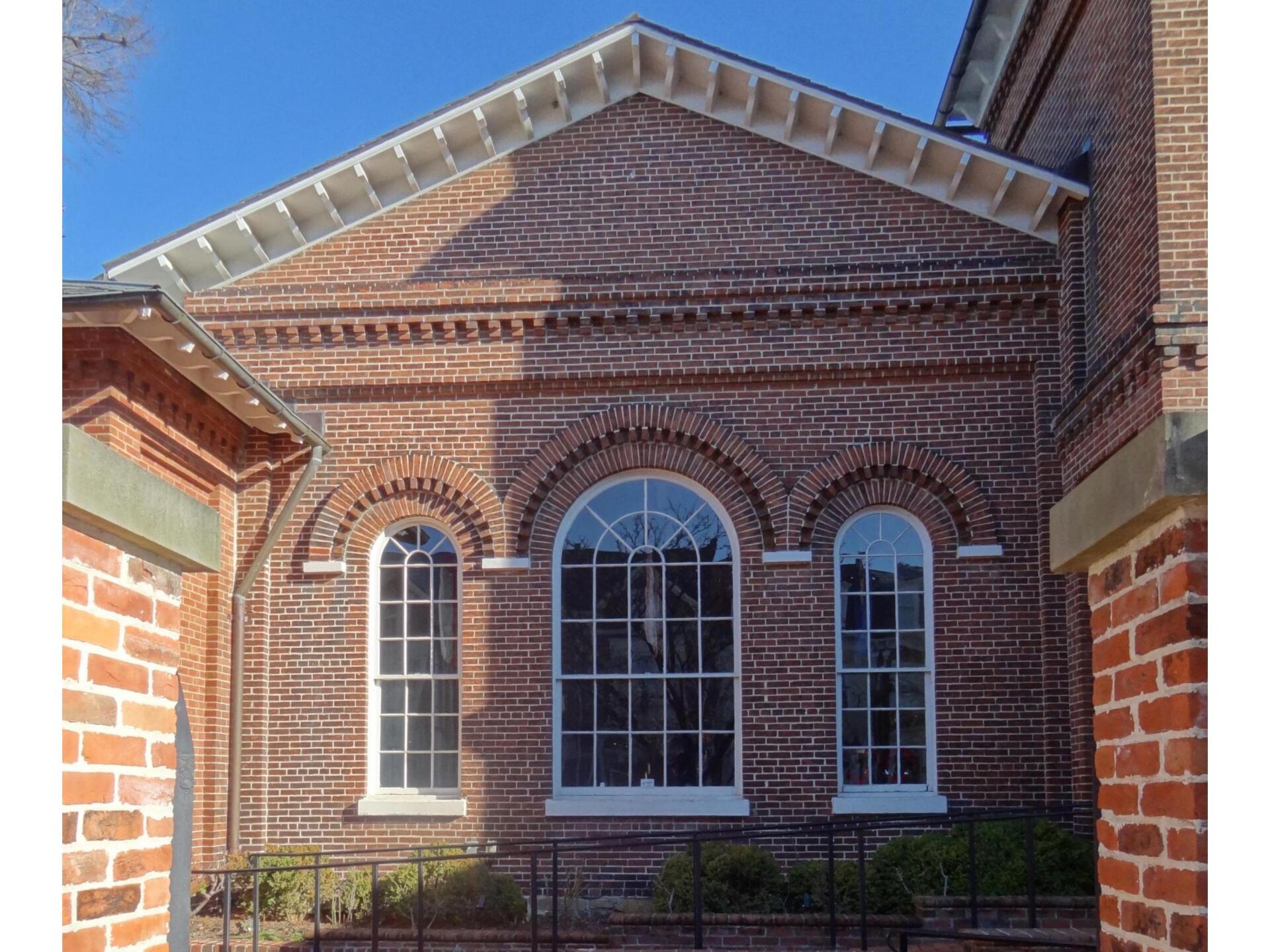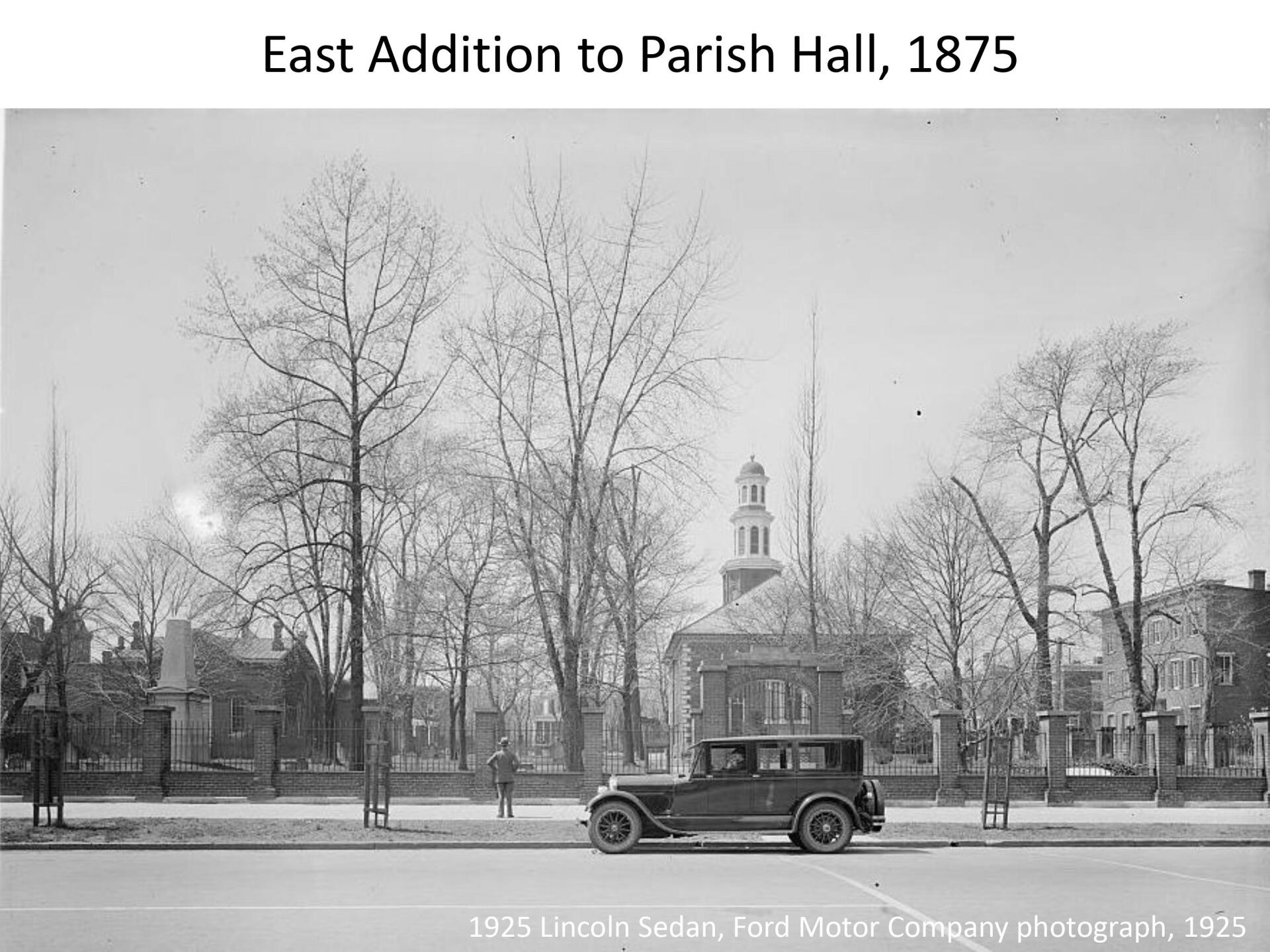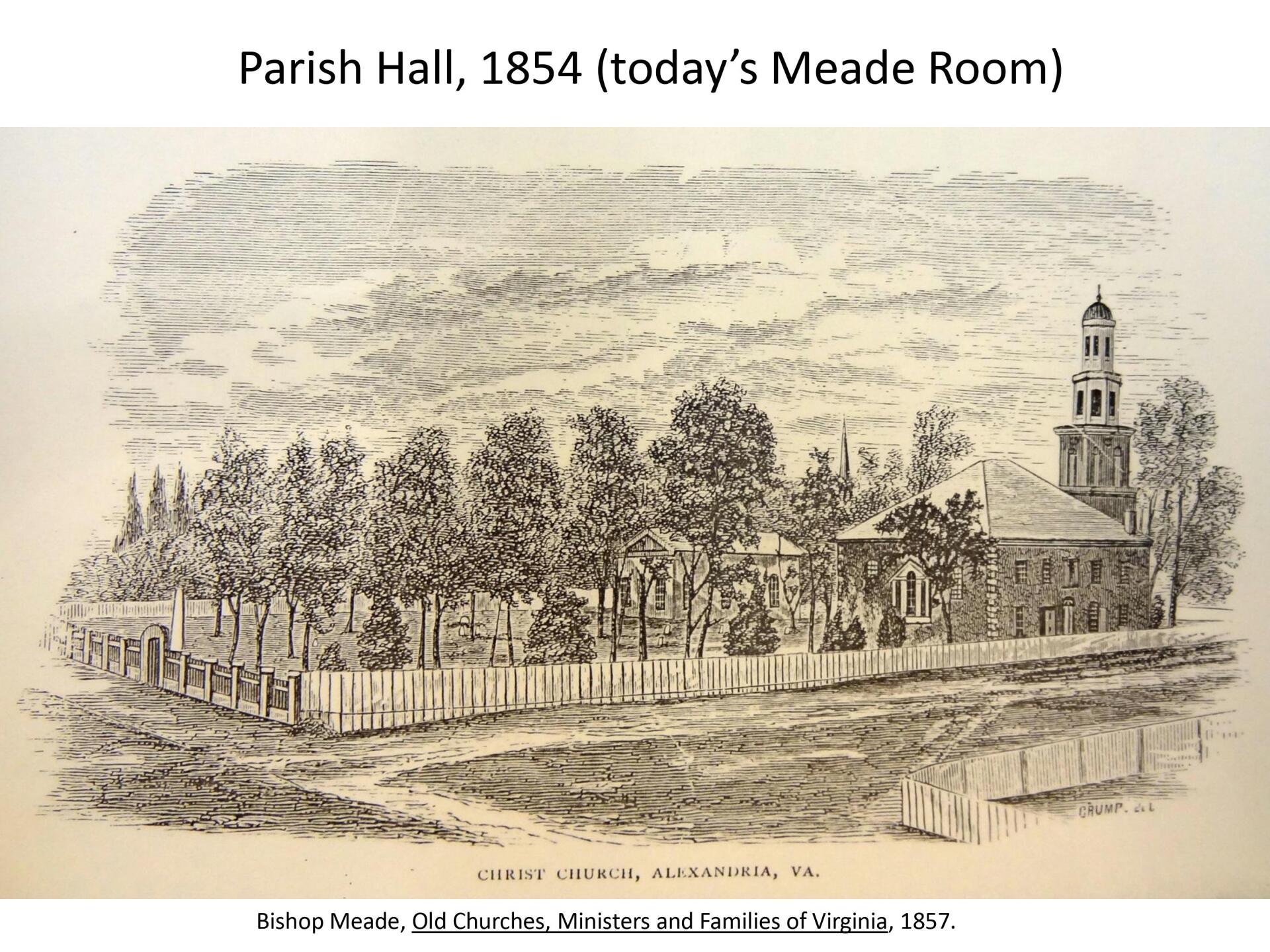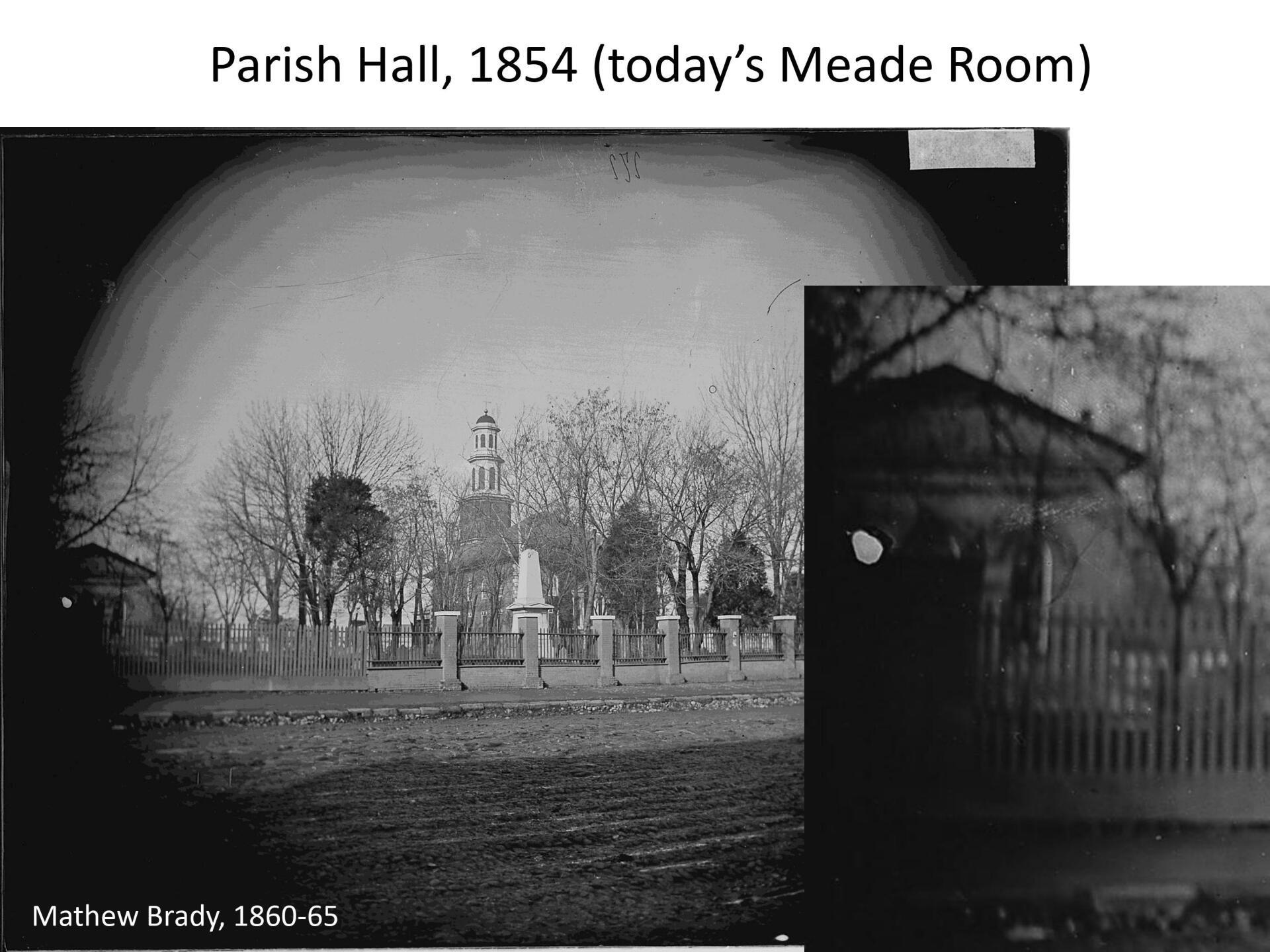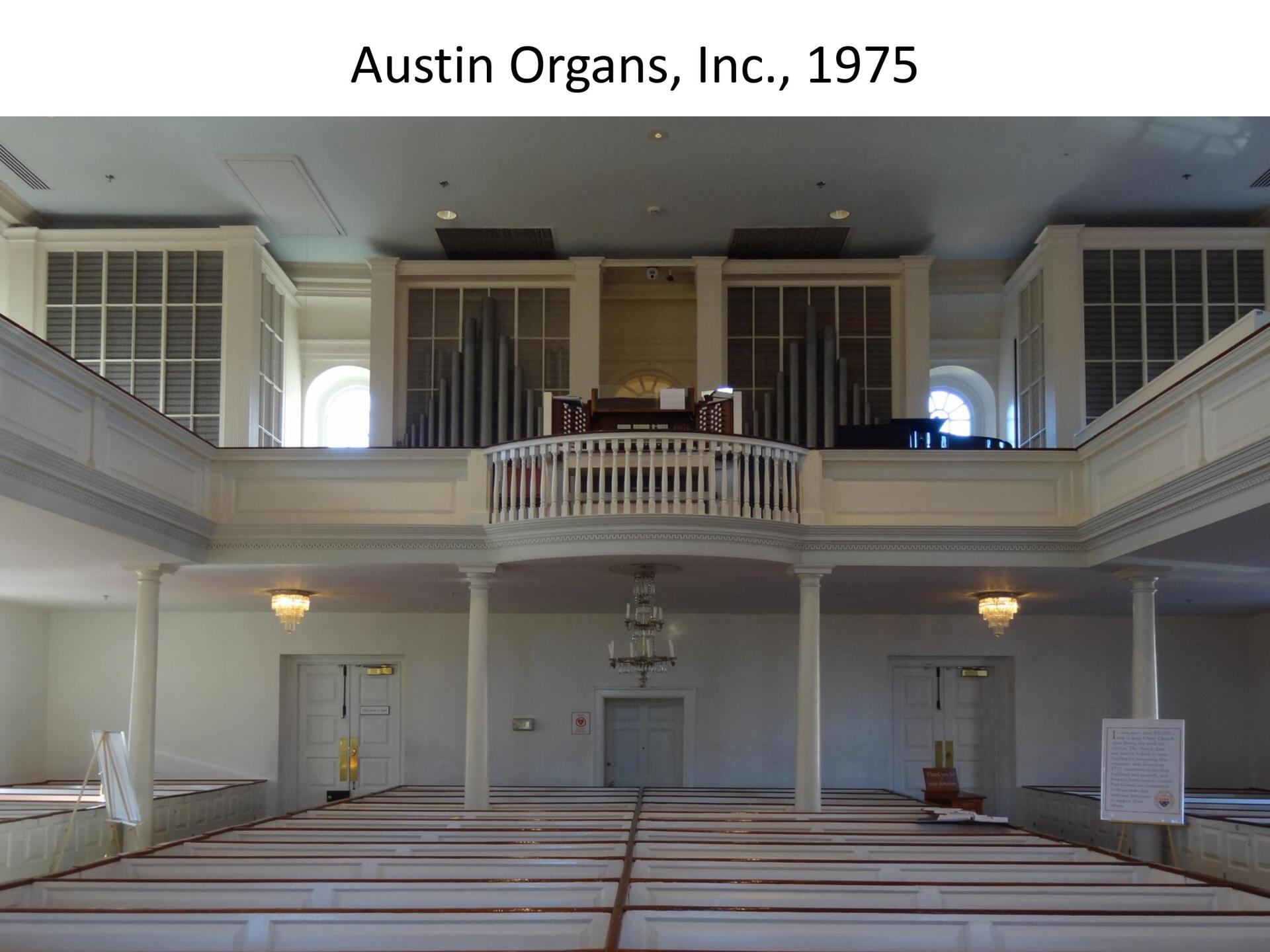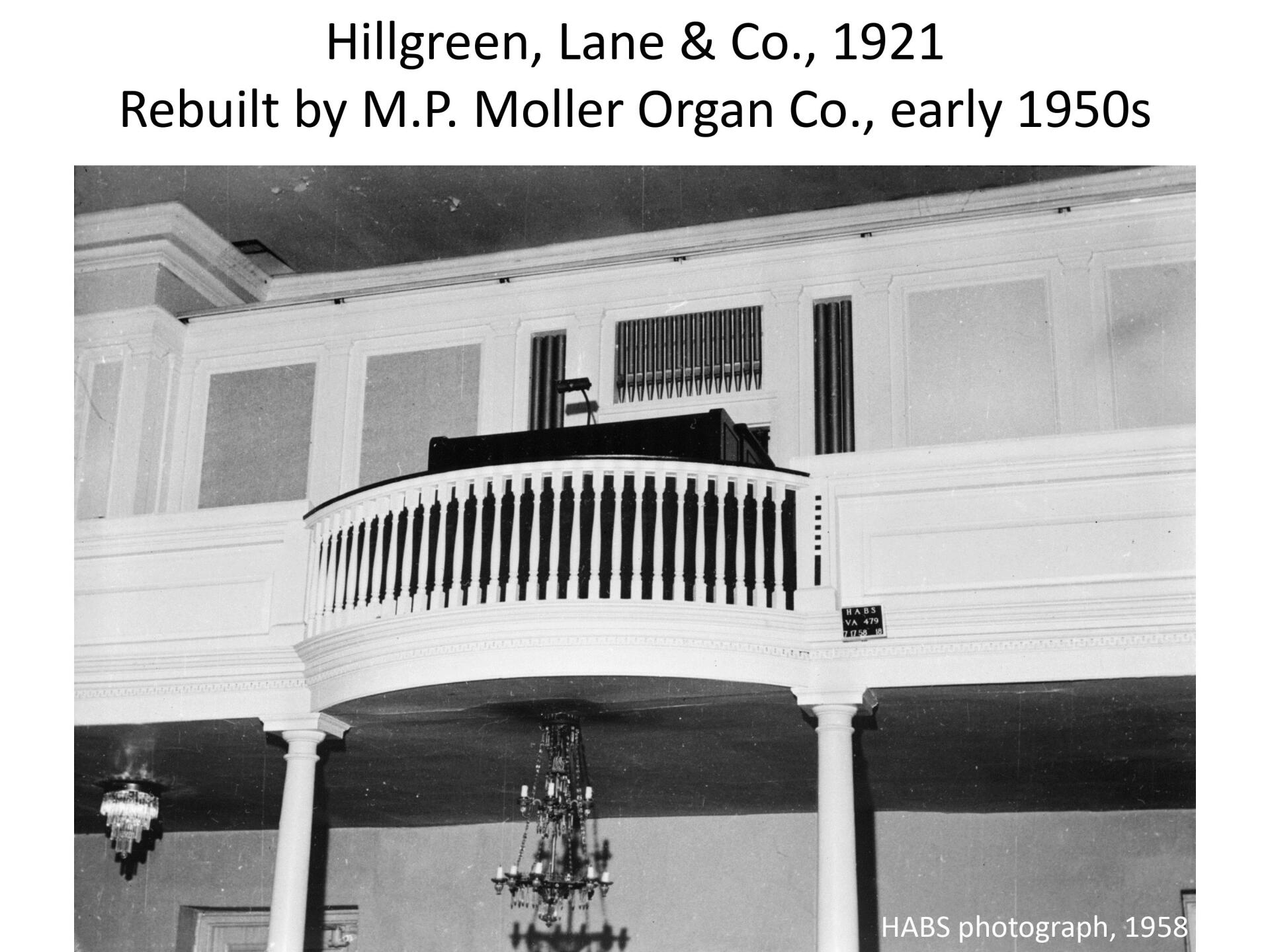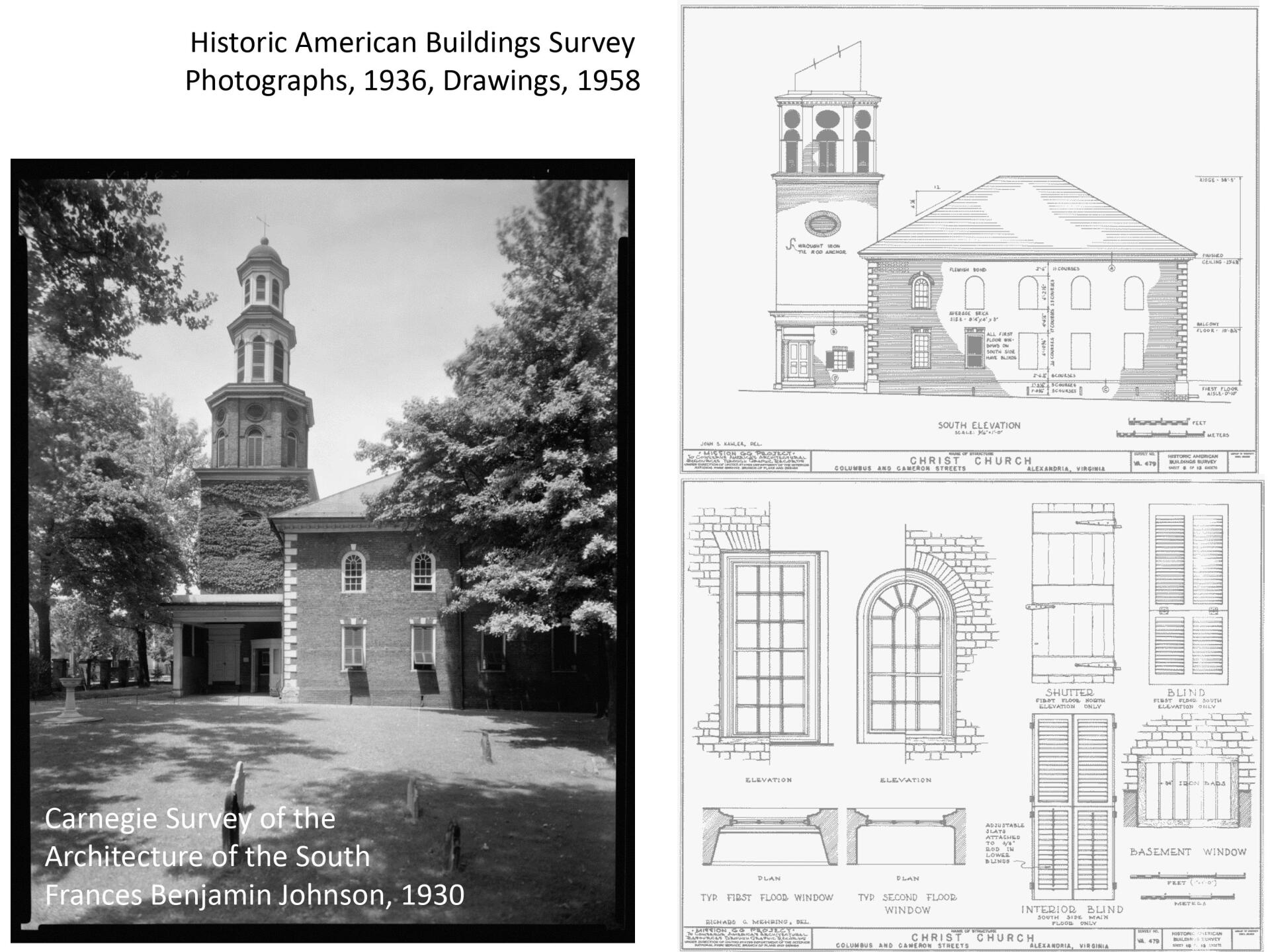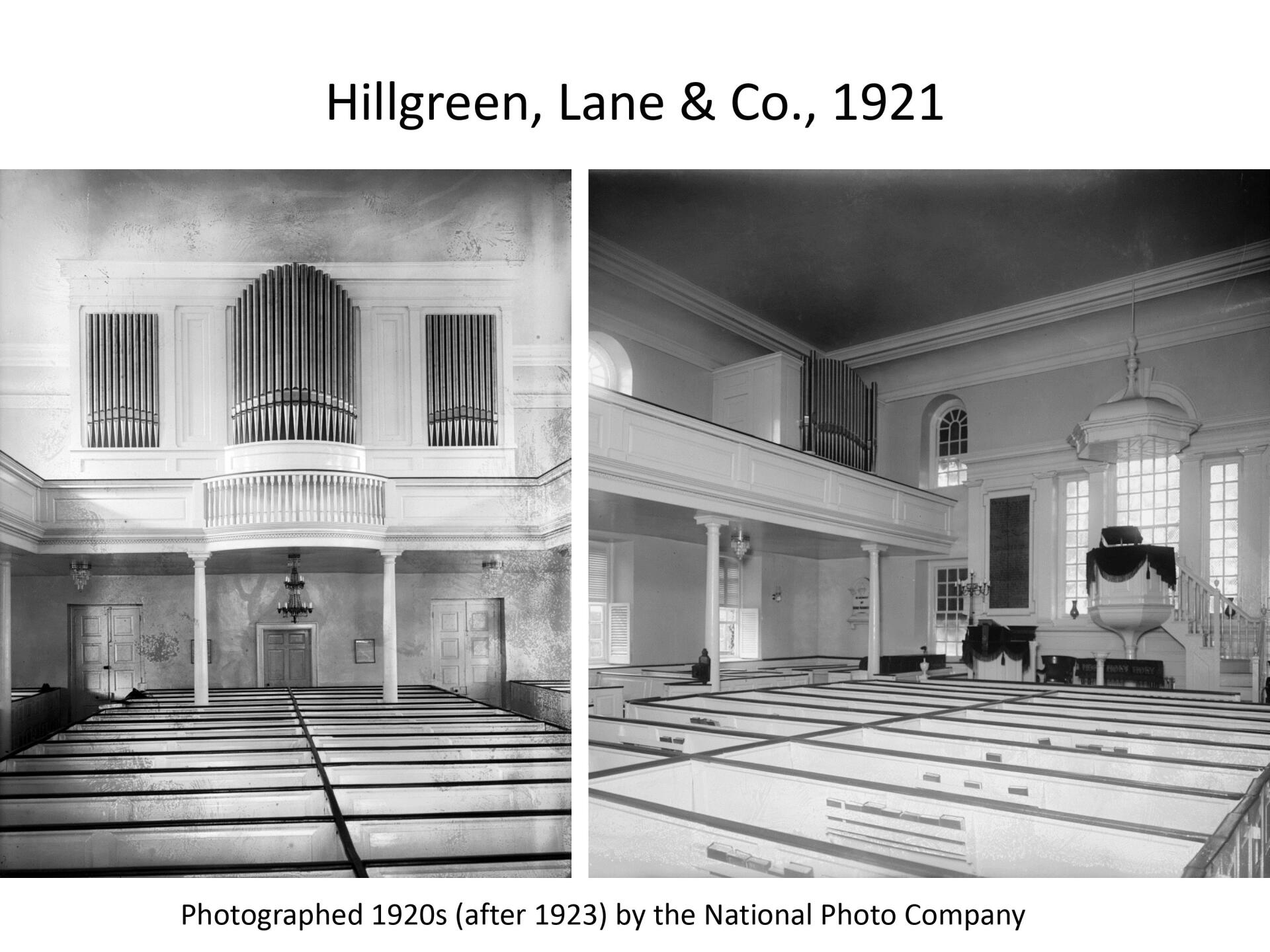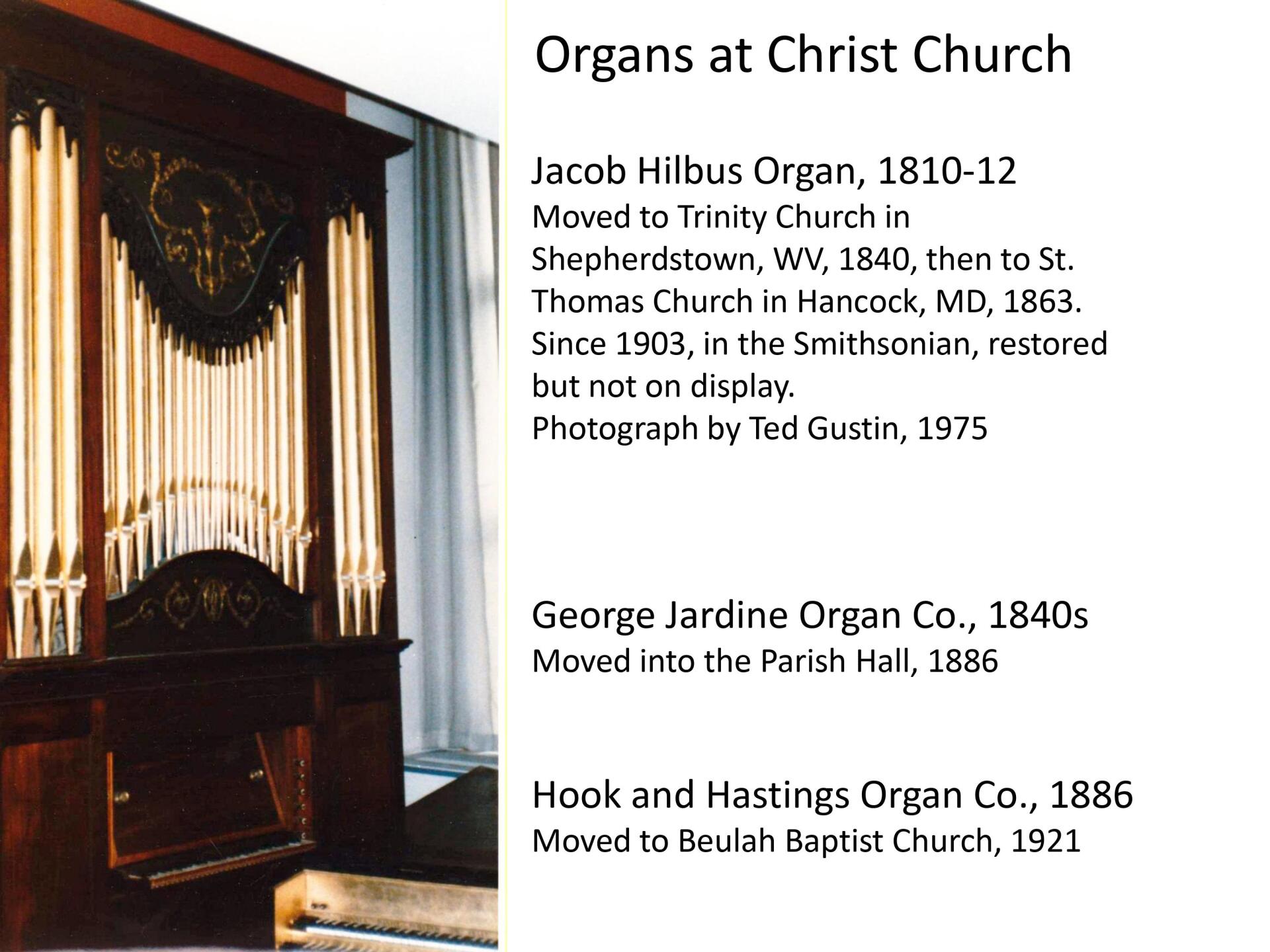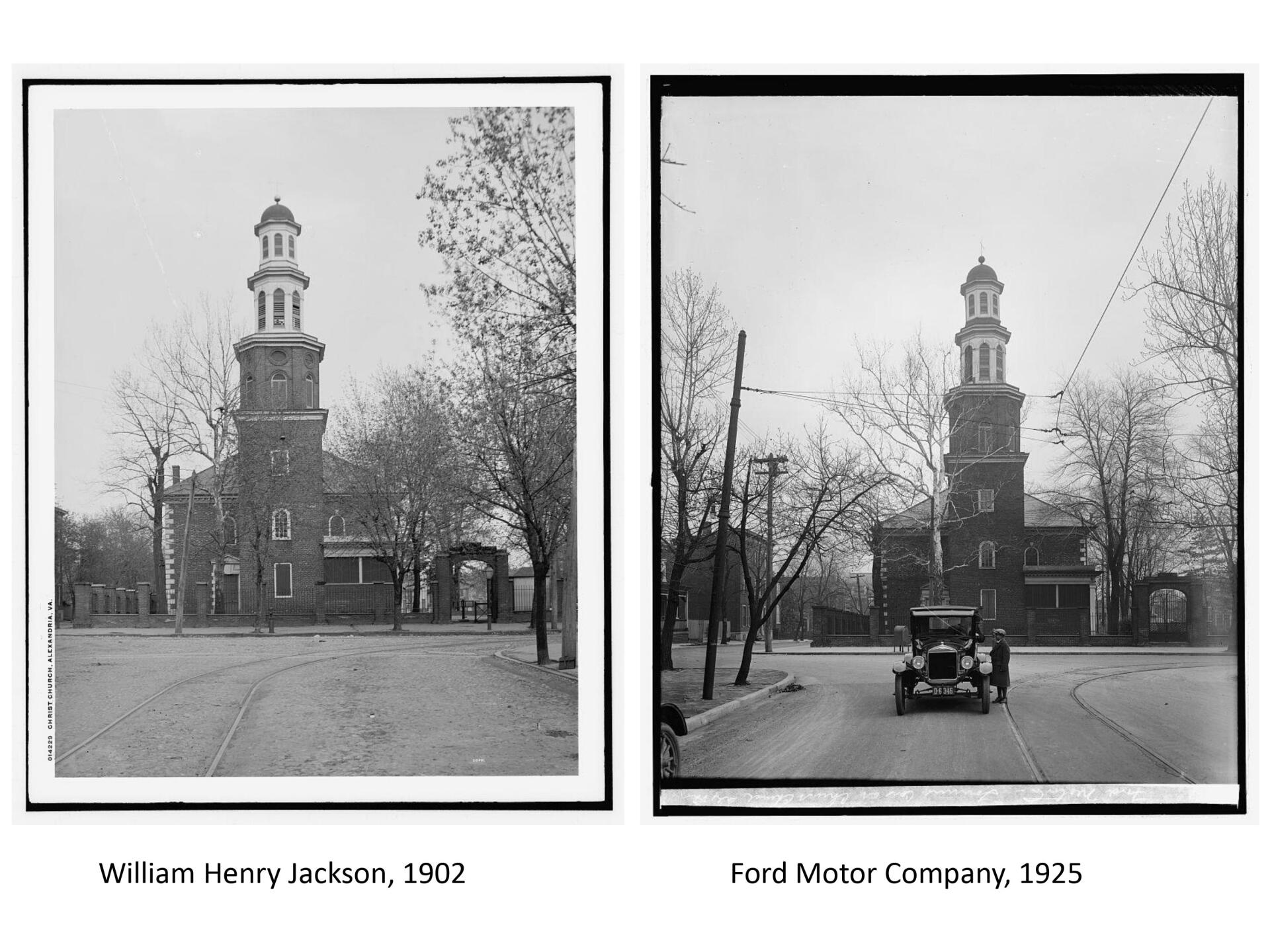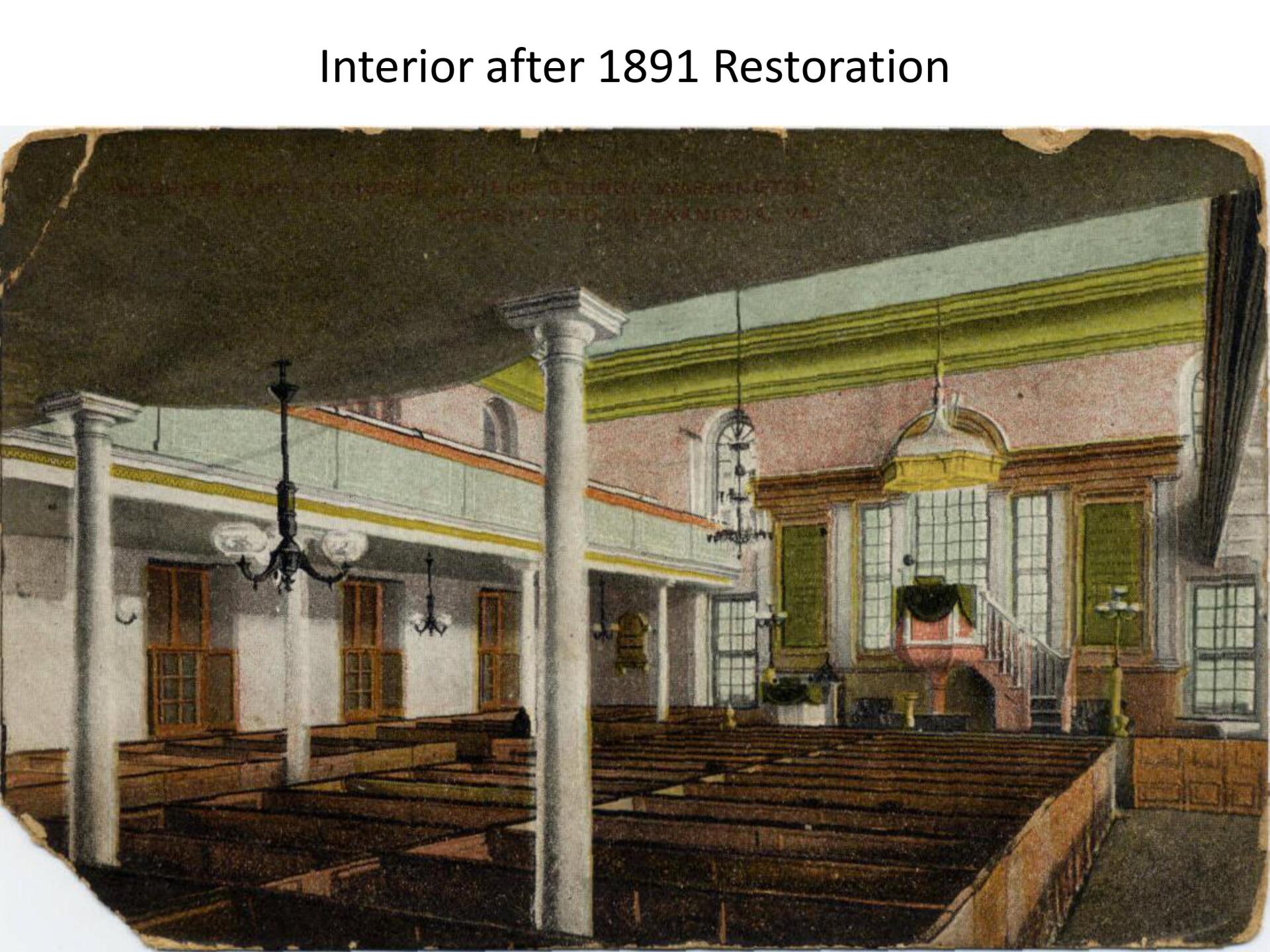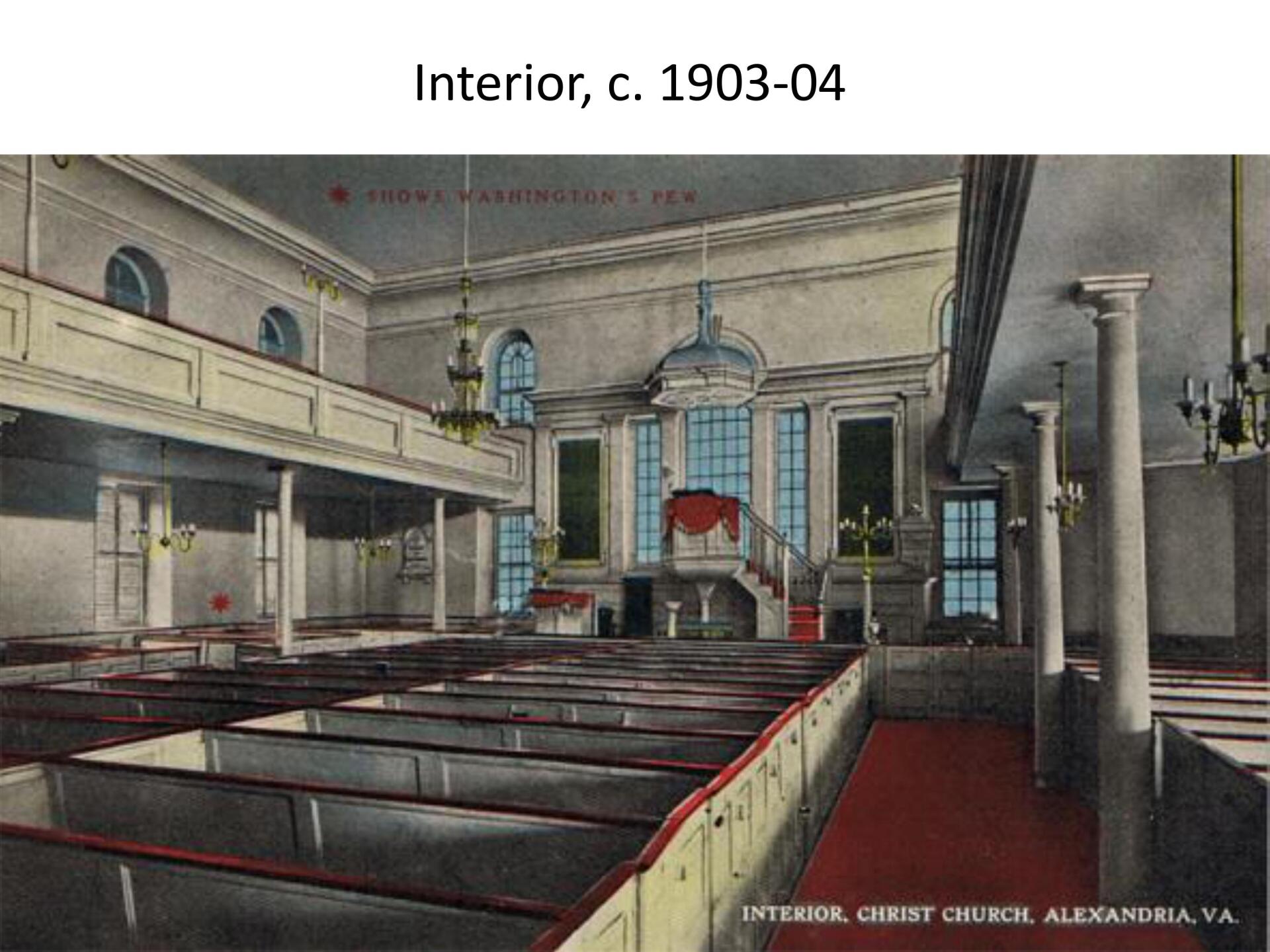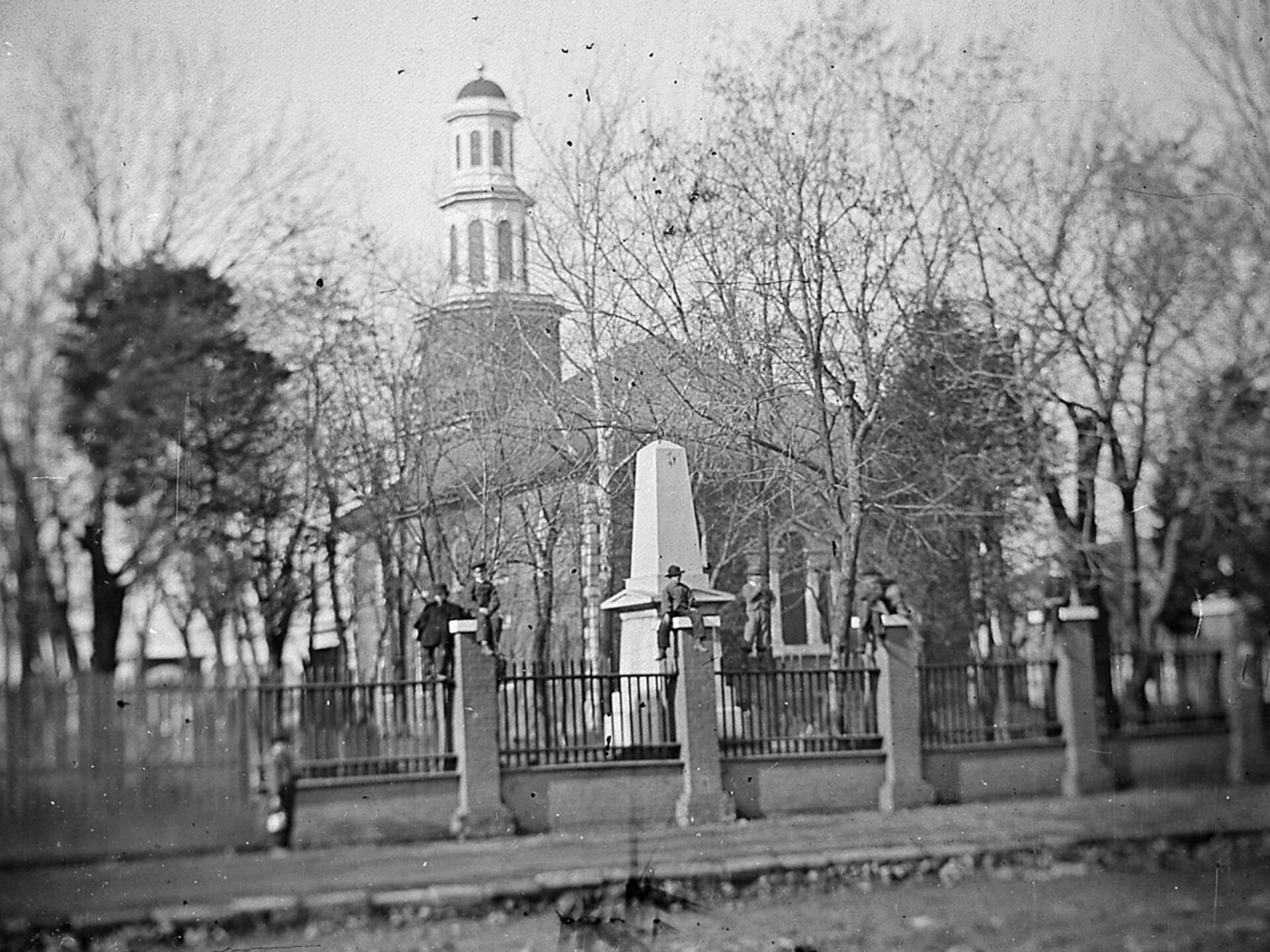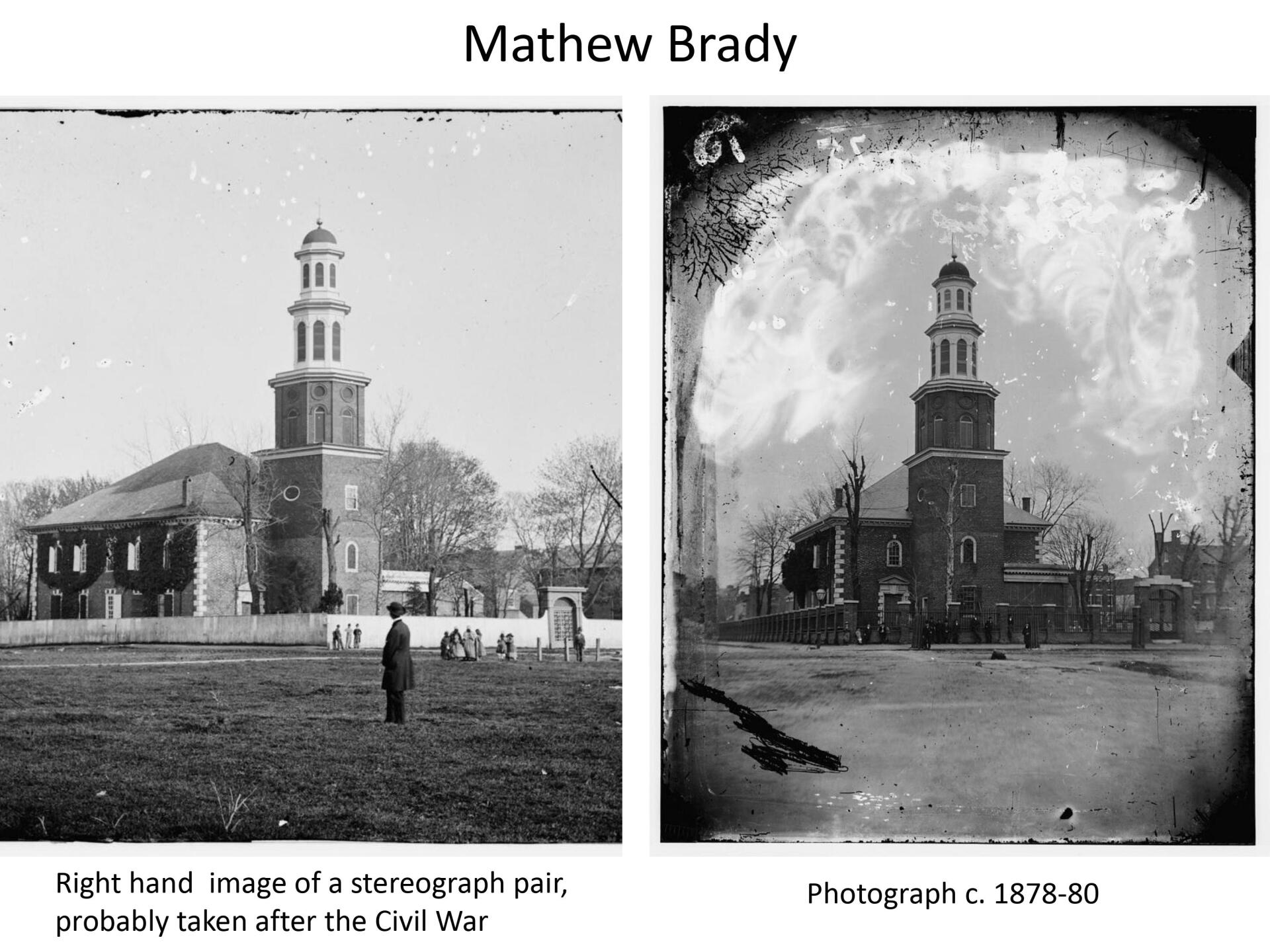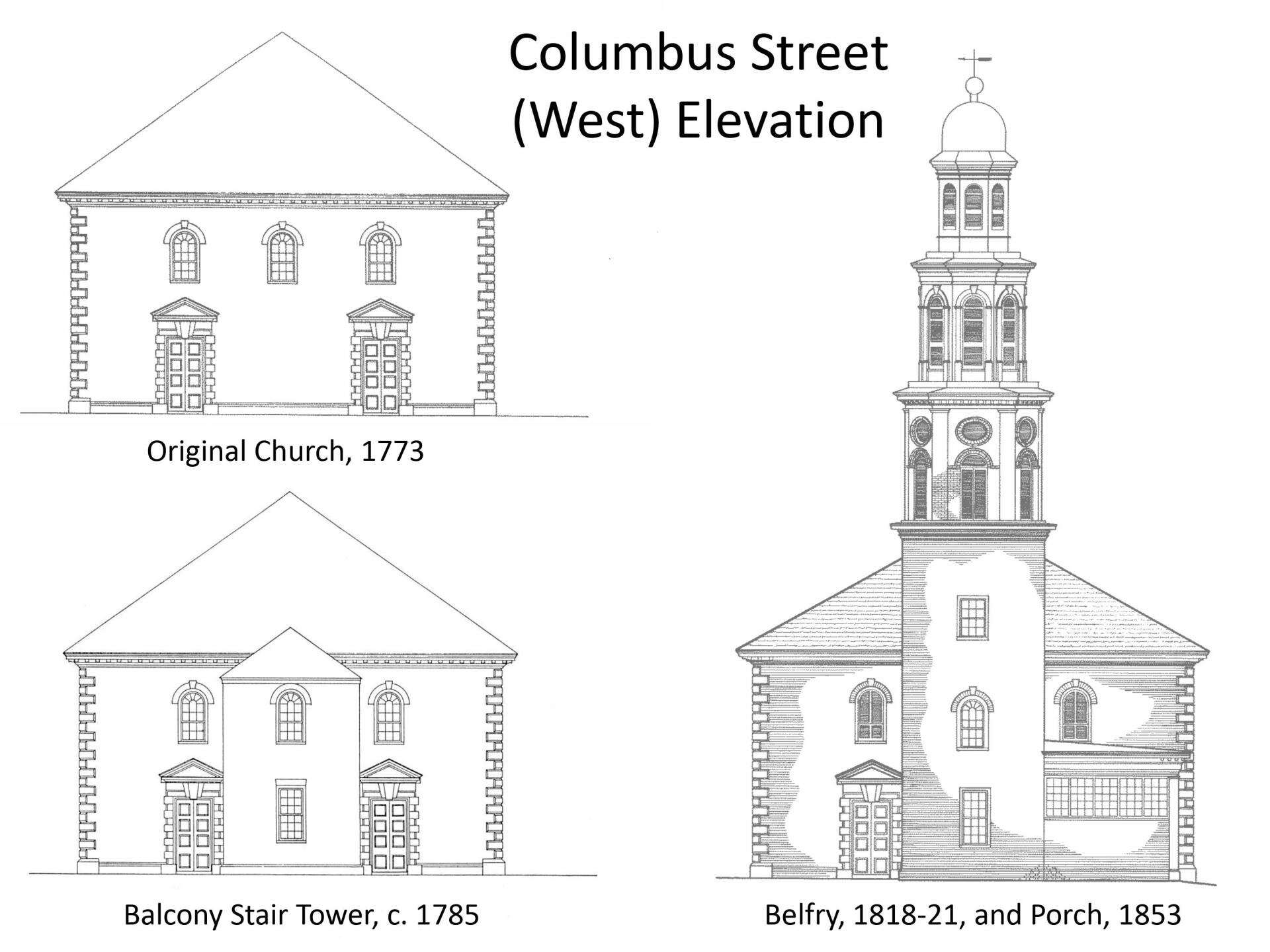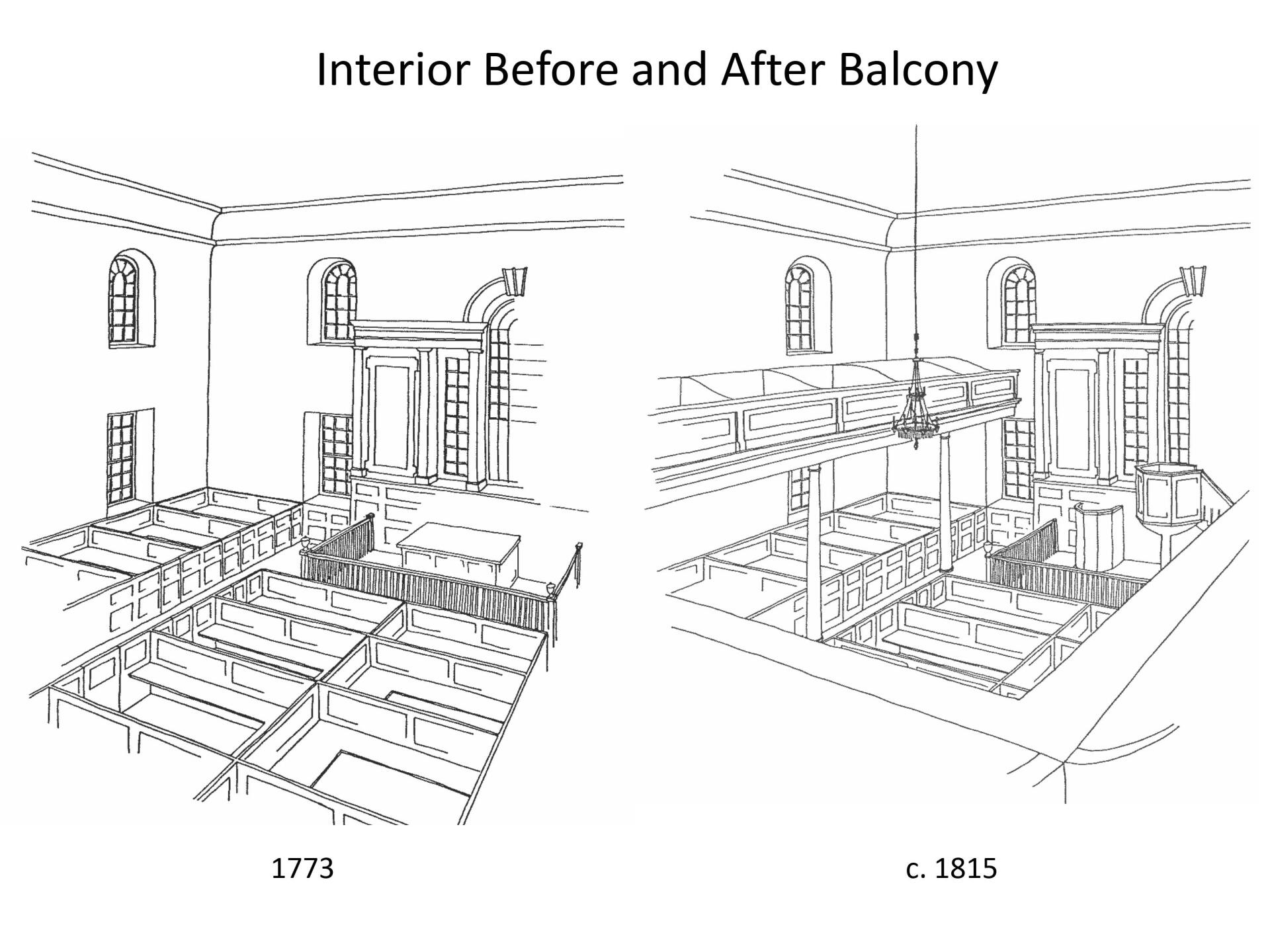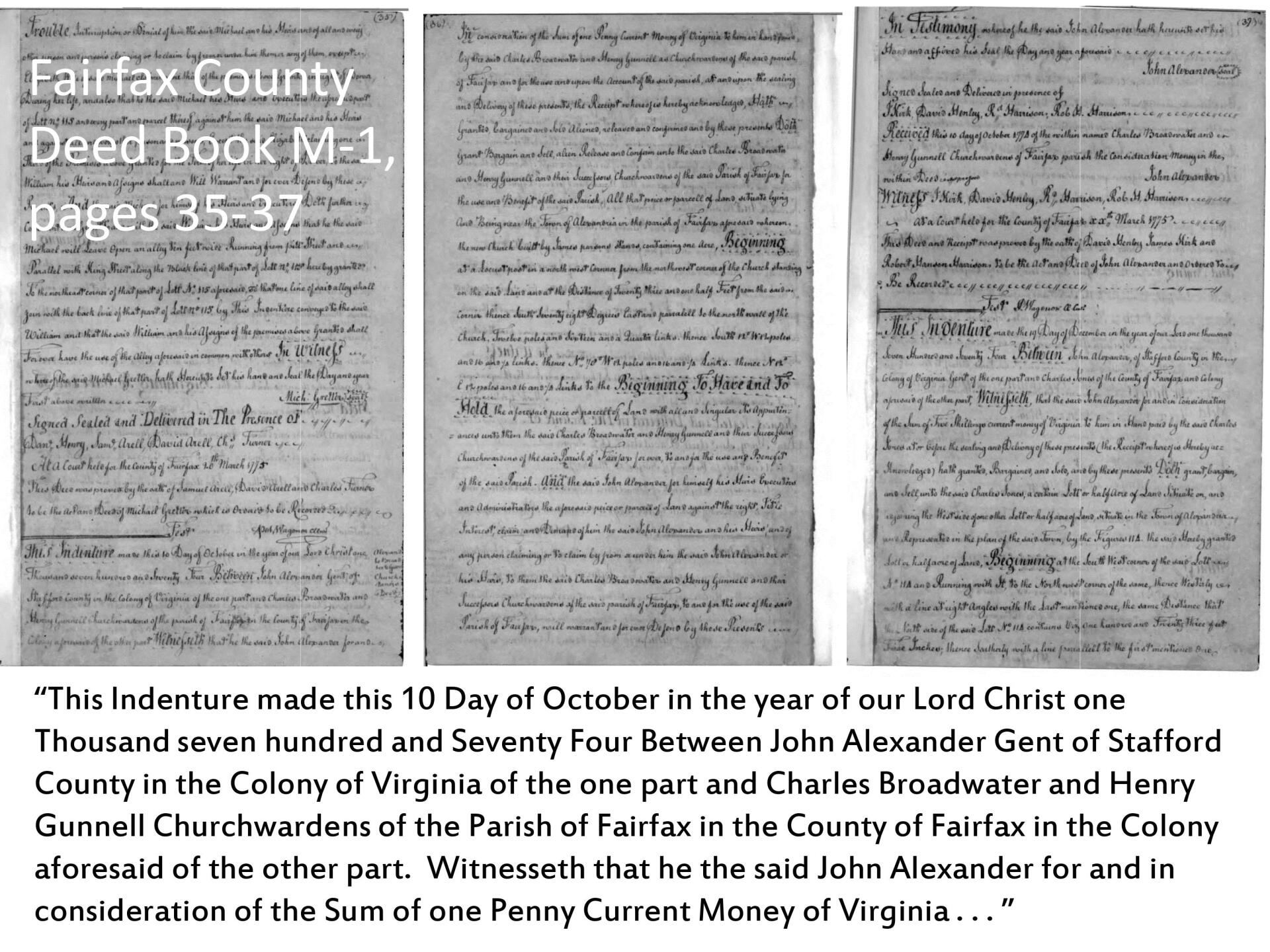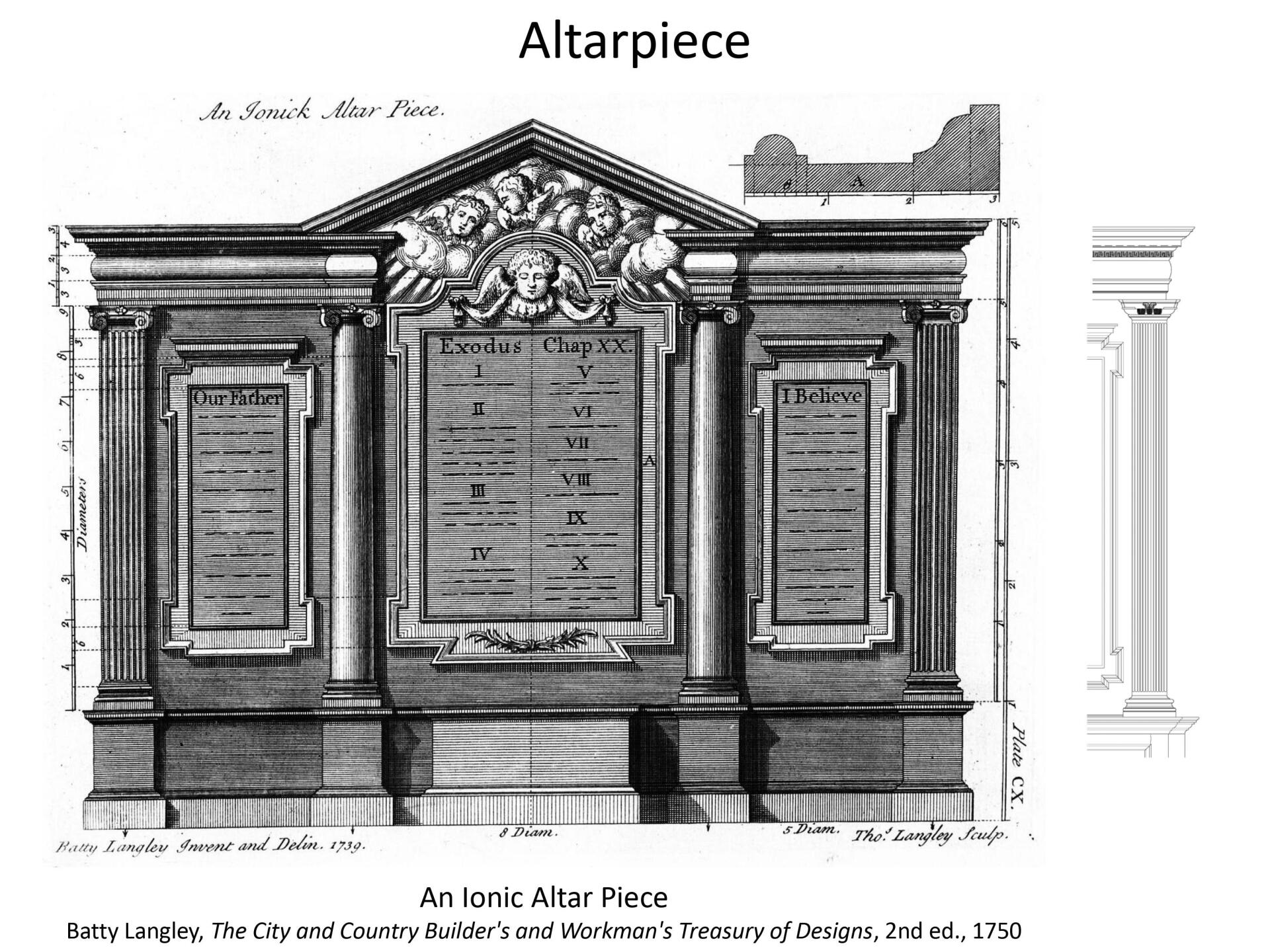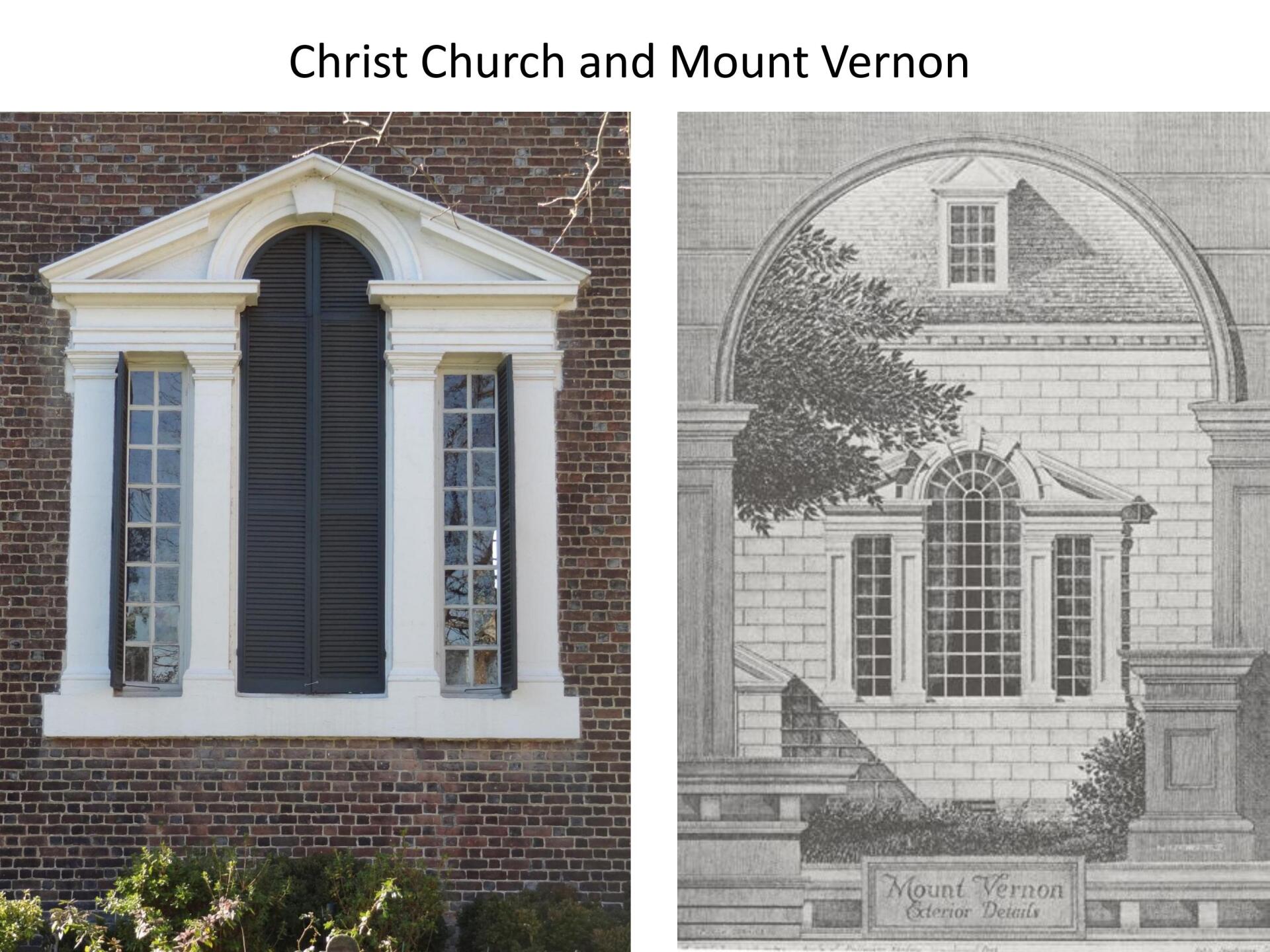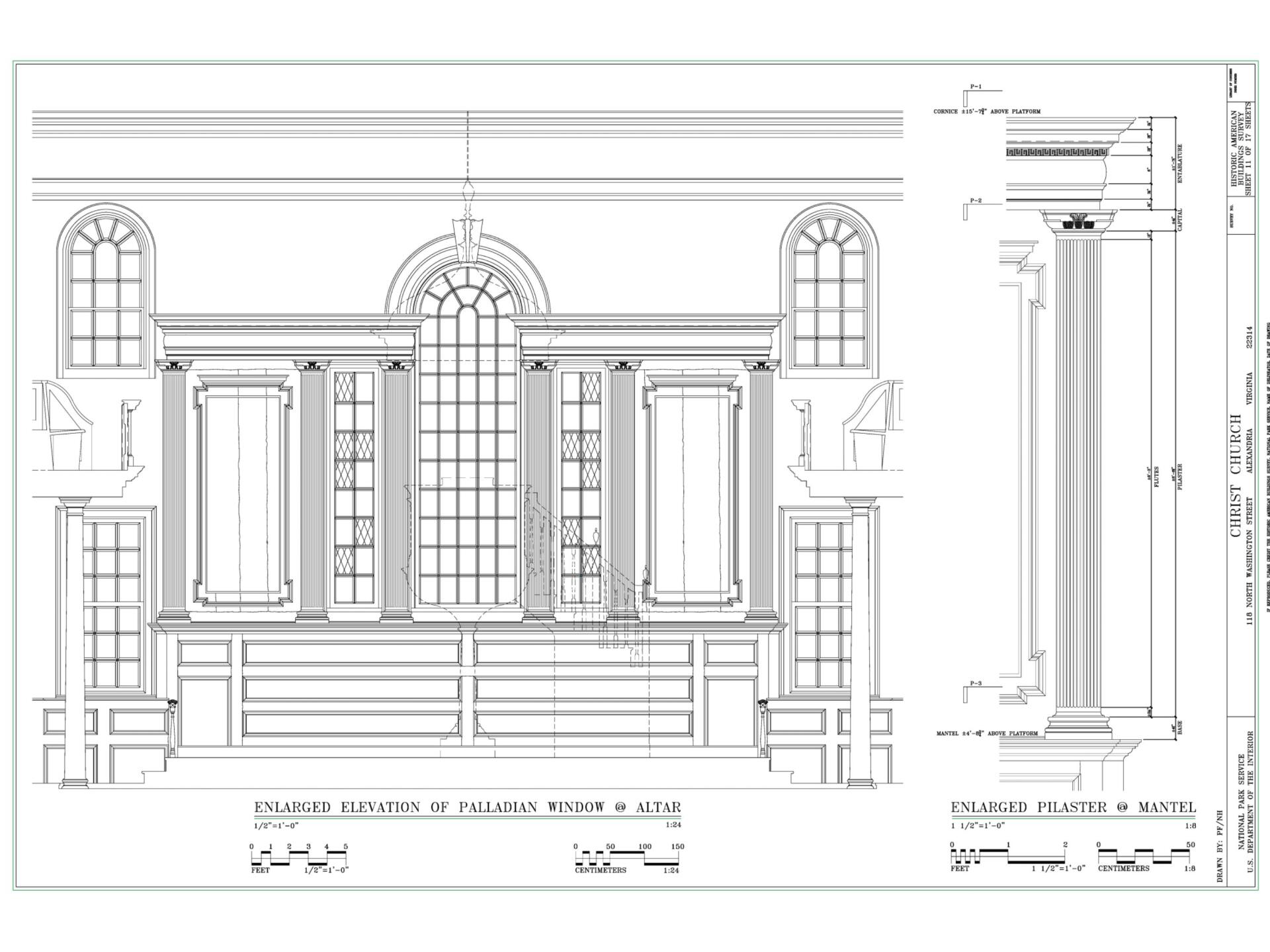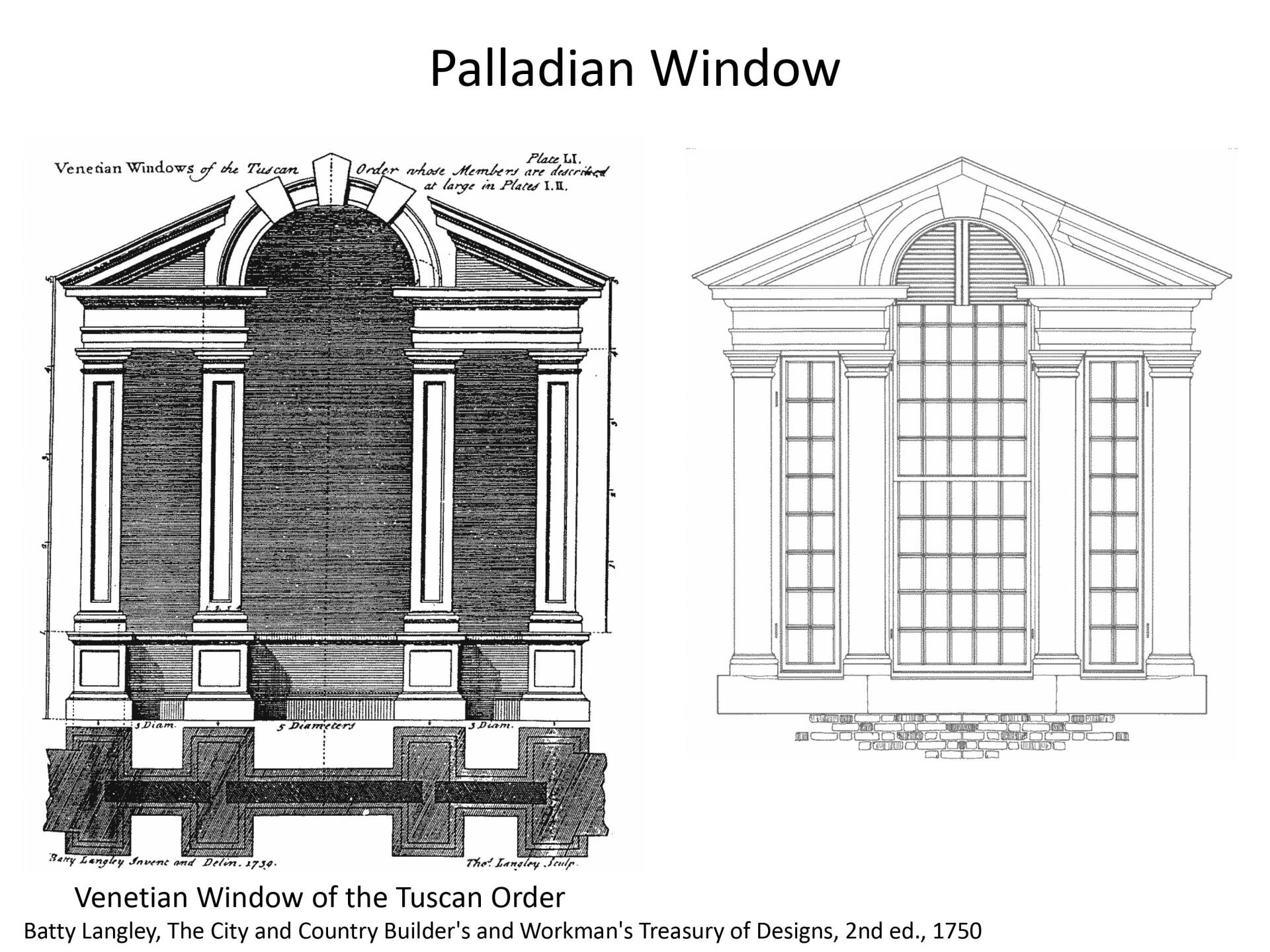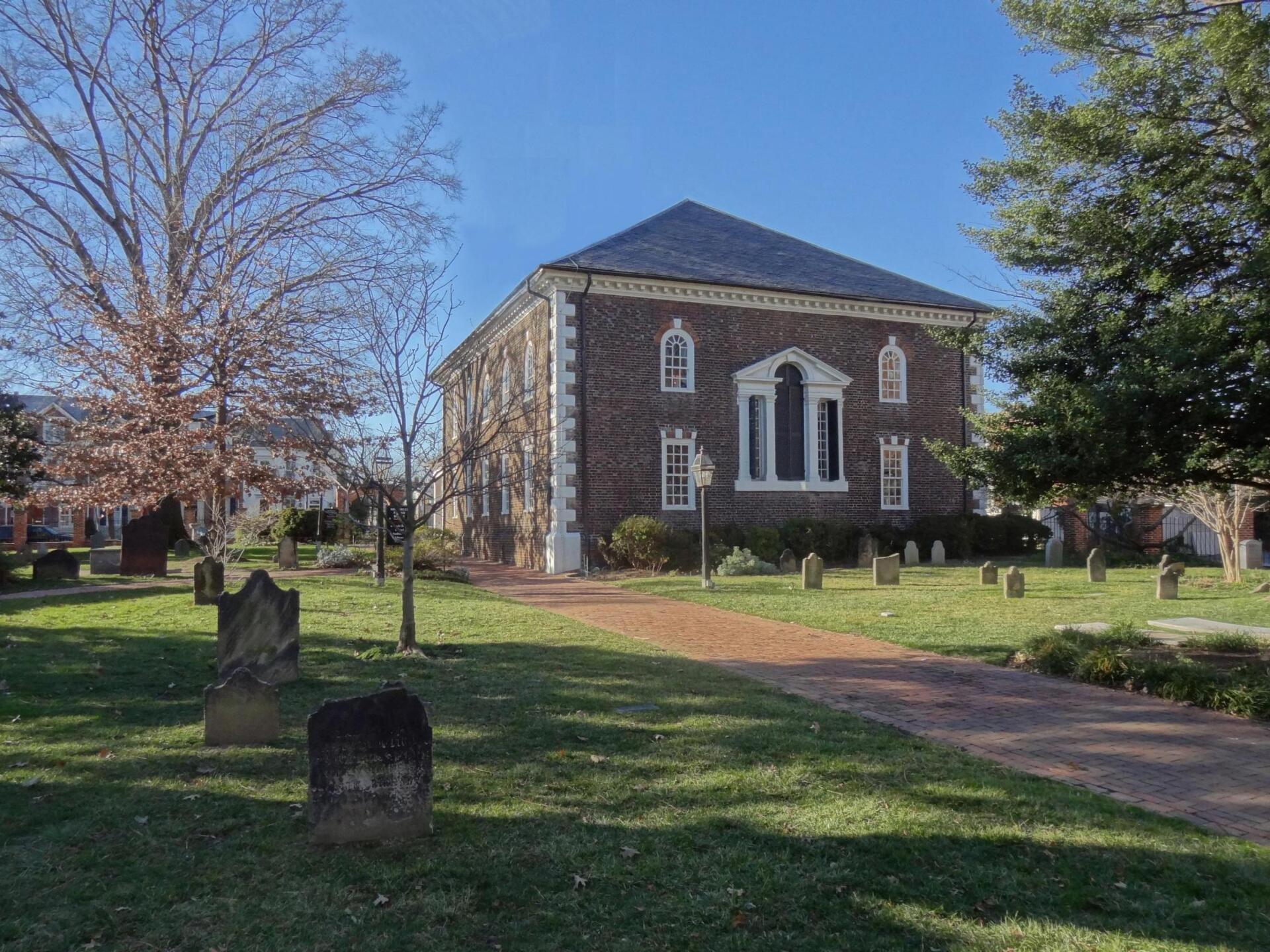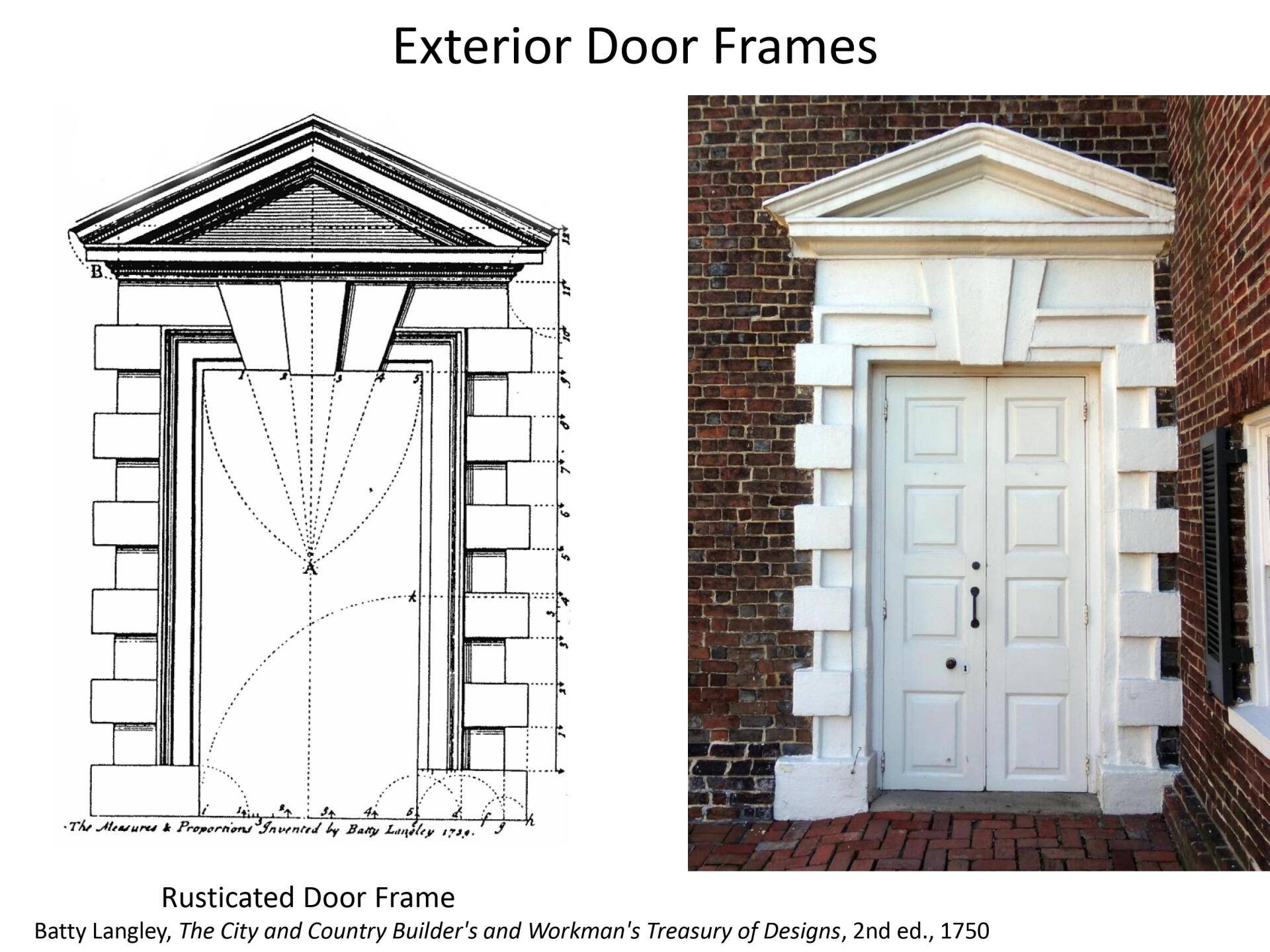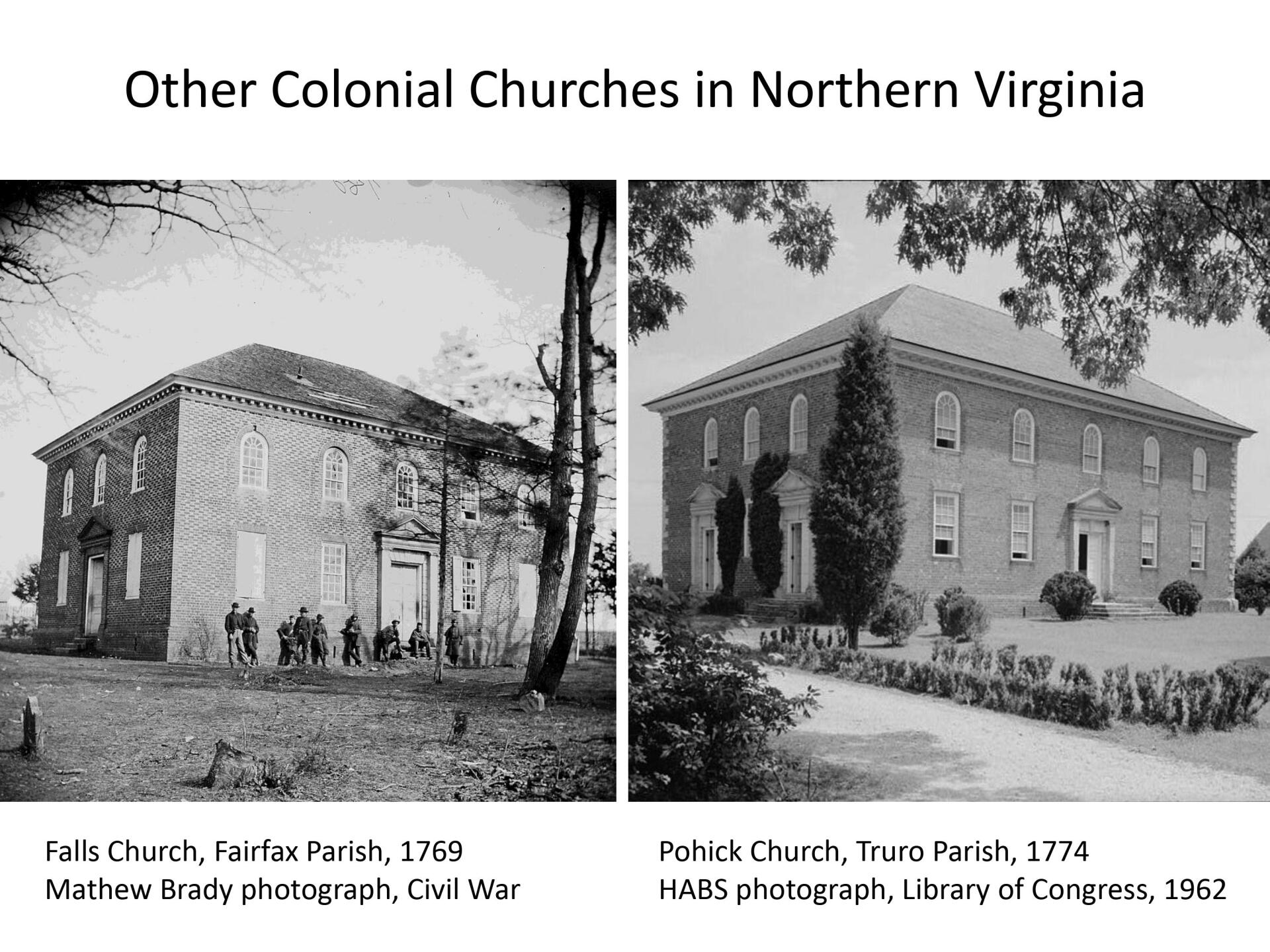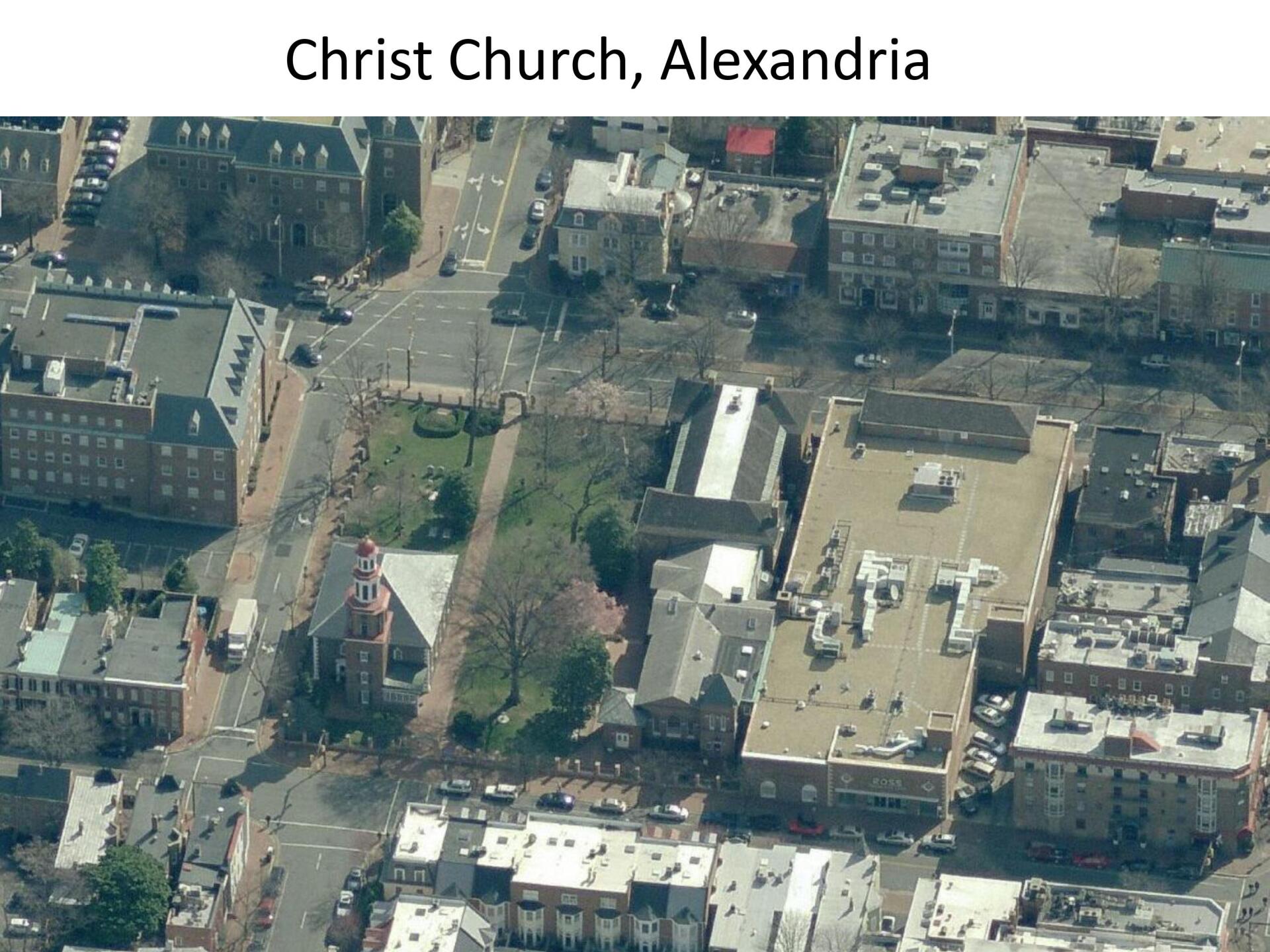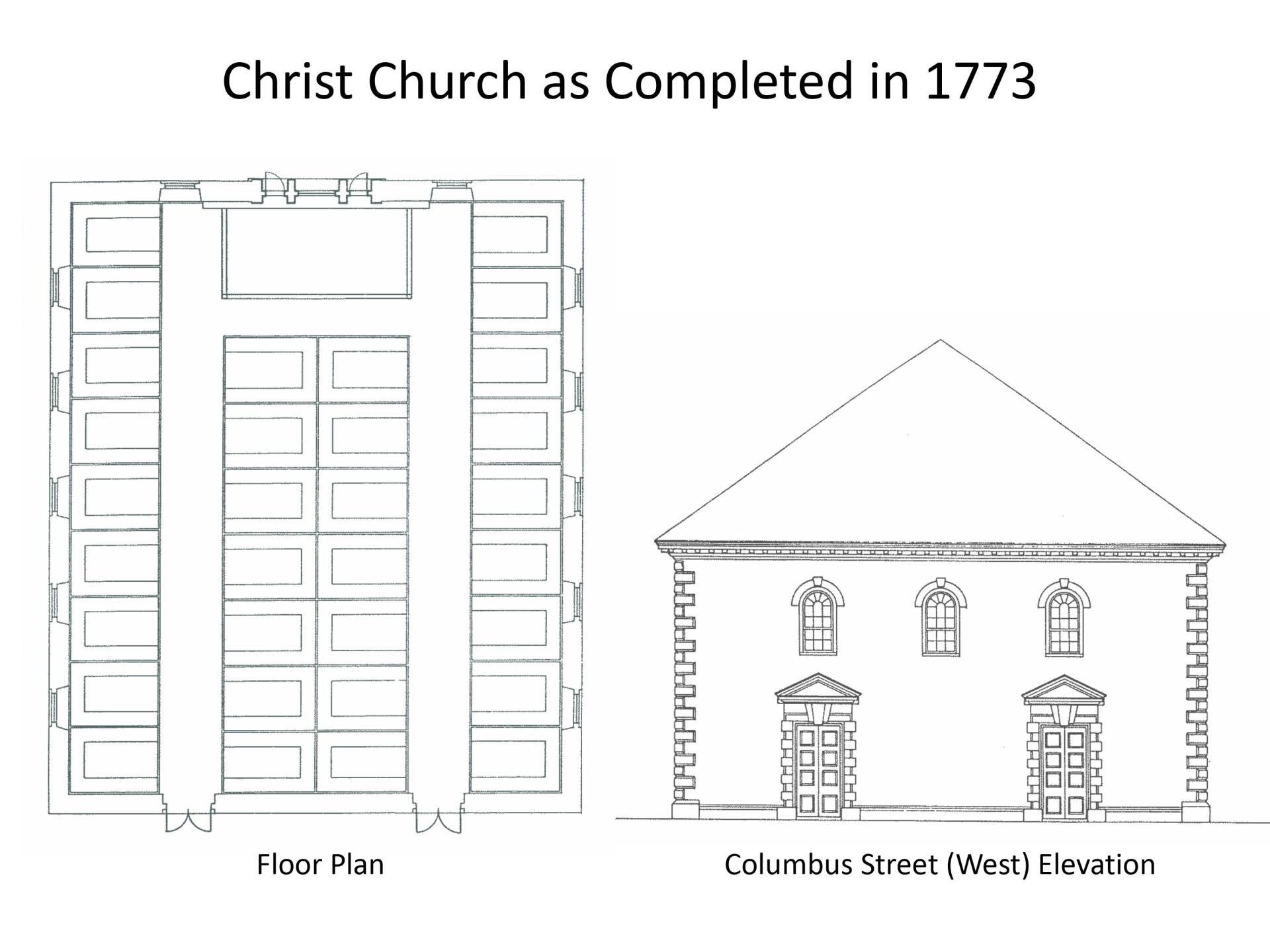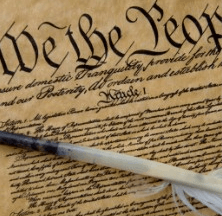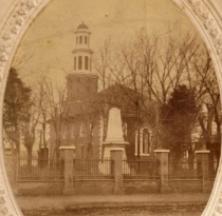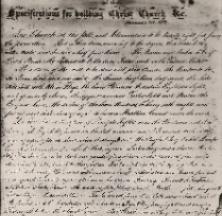Our History
250 years of loving God
Our History
250 years of loving God
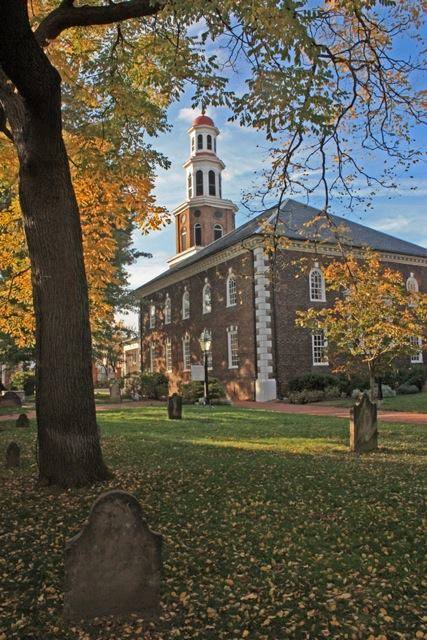
WELCOME HISTORY BUFFS, TRAVELERS, & SEEKERS OF INFORMATION
to a church where George Washington worshipped. Christ Church was built more than 235 years ago to be a parish church to meet the spiritual needs of its parishioners and the community, a tradition that continues today. Originally built in a quiet, wooded location, Christ Church now has more than 2,400 members and is in the heart of the City of Alexandria. All are welcome.
Scroll down for a look at our 250-year history.

WELCOME HISTORY BUFFS, TRAVELERS, & SEEKERS OF INFORMATION
to a church where George Washington worshipped. Christ Church was built more than 250 years ago to be a parish church to meet the spiritual needs of its parishioners and the community, a tradition that continues today. Originally built in a quiet, wooded location, Christ Church now has more than 1200 members and is in the heart of the City of Alexandria. All are welcome.
Scroll down for a look at our 250-year history.
Christ Church Timeline
Christ Church Timeline
For an in-depth historical timeline of Christ Church from 1749 to present day, please visit: our timeline page.
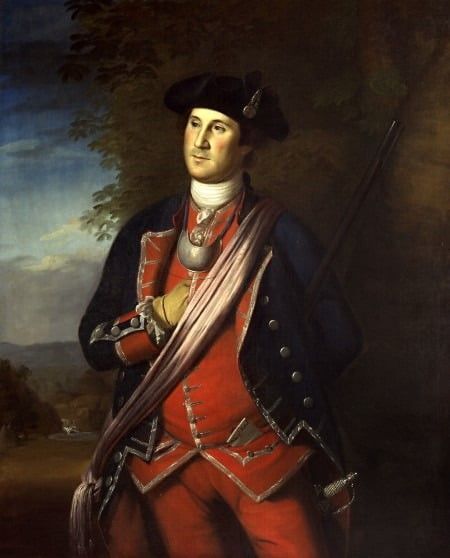
Slide title
Write your caption hereButton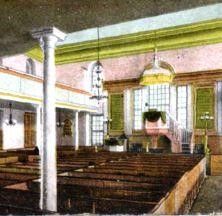
Slide title
Write your caption hereButton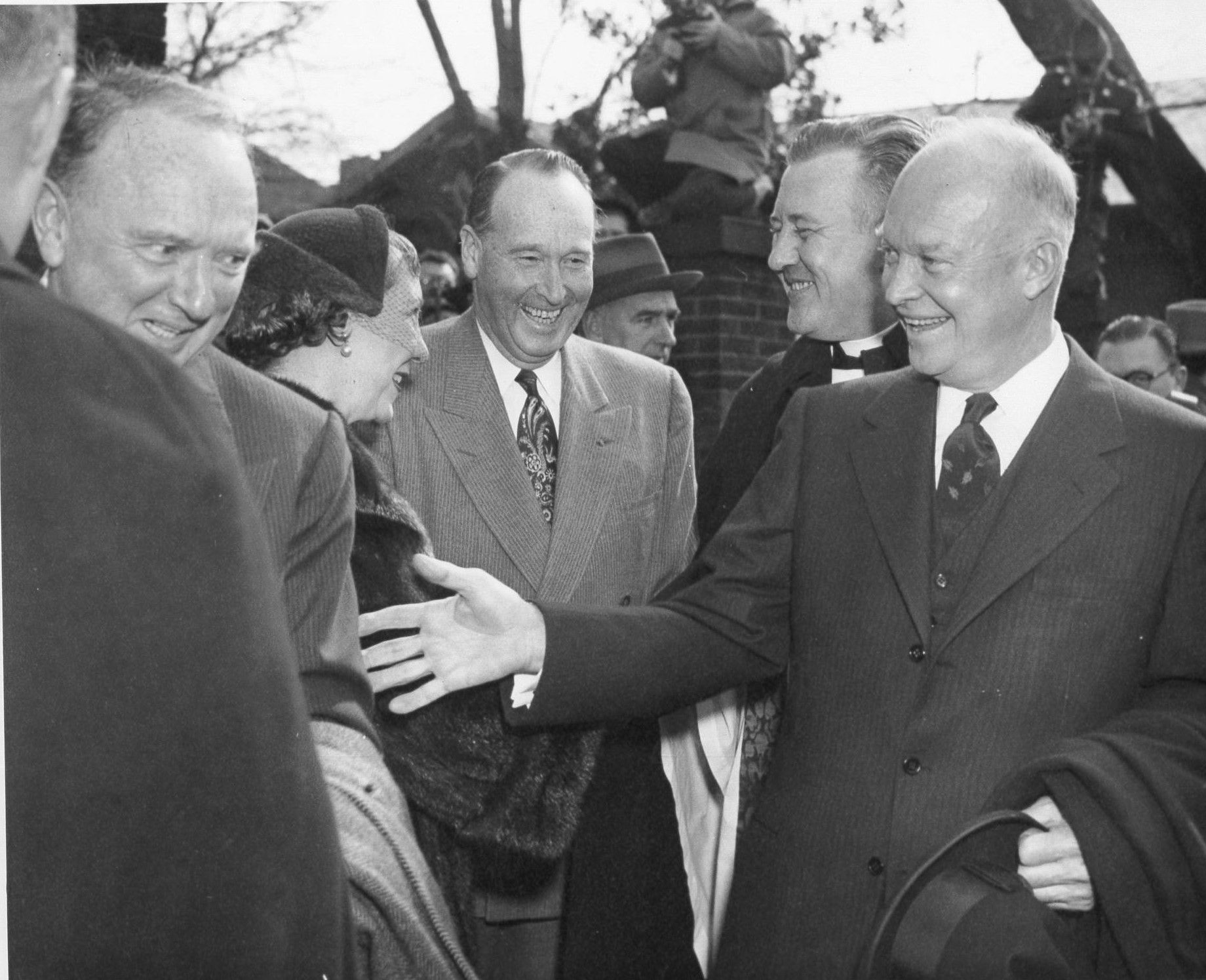
Slide title
Write your caption hereButton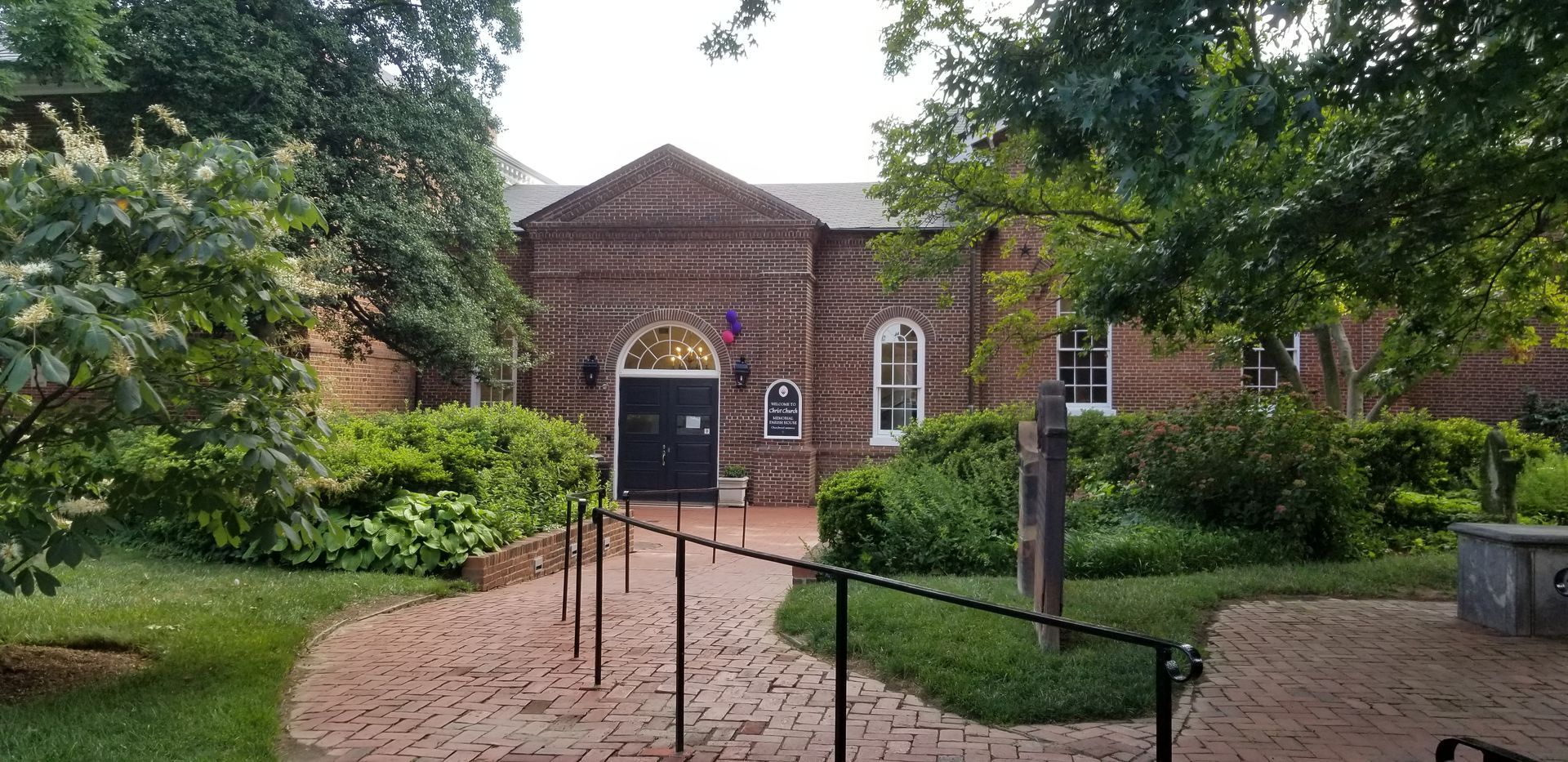
Slide title
Write your caption hereButton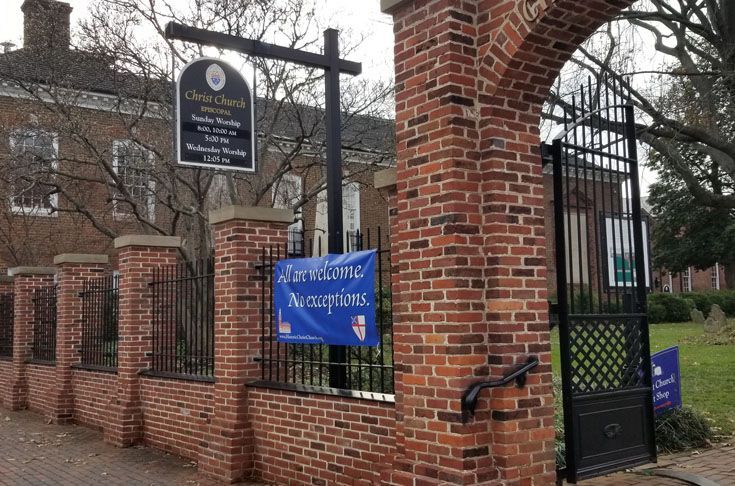
Slide title
Write your caption hereButton
Christ Church in Photos
2011
Fowler House celebrates 10th anniversary.
2010
Auditorium in Parish Hall remodeled.
2009
Renovation of Library in Parish Hall
December 21, 2008
President George W. Bush attends service.
December 21, 2008
President and Mrs. George W. Bush attend service.
December 21, 2008
President and Mrs. George W. Bush arrive for service.
1986-1987
Parish Halls remodeled and connected.
1982
President and Mrs. Ronald Reagan attend service.
February 23, 1975
President and Mrs. Ford attend service.
1973
The Rev. William Sydnor, Rector, and Presiding Bishop John Hines.
1967
First woman, Marguerite Lamond, elected to Christ Church vestry.
1950-1951
Memorial Parish Hall constructed
1942
Vested choir during World War 2.
January 1, 1942
President Franklin D. Roosevelt and British Prime Minister Winston Churchill.
1913
Rev. William Jackson Morton in pulpit.
1902-1935
The Rev. William Jackson Morton, Rector.
1898
Turnstile installed at the Columbus St. gate.
1873
Meade Memorial.
1872
Sallie Stuart.
1866-1867
Victorian redecoration of Christ Church.
1811-1813
The Rev. William Meade, Rector.
1811
Robert E. Lee's nuclear family moved permanently to Alexandria.
May 1, 1809
Christ Church Wilkes Cemetery established.
Click on an image to view full gallery
A Closer Look At Christ Church
-
Detailed History of Christ Church
The Church of England, the established church of Virginia, was part of and protected by the colonial government, which divided the colony into geographical areas known as parishes for administrative purposes. All residents of a parish were members of it and required to pay taxes to sustain it. An elected vestry of twelve men conducted the business of the parish, which consisted primarily of religious activities and provision of the equivalent of modern social welfare services.
The City of Alexandria, founded in 1749, had a chapel of ease located here by 1753—
a place of worship for the convenience of parishioners distant from the main church. In 1765, the growth of the population led the Virginia legislature to divide the parish. The new parish created out of the northern end of Truro parish was named Fairfax. Its vestry decided that the main church at Falls Church and the chapel of ease at Alexandria were inadequate and would be replaced. Two new, similar churches, designed by James Wren, were then built from one set of plans.
The American Revolution began shortly after completion of the churches and ultimately required the organization of the Episcopal Church in the United States of America, an autonomous province of the worldwide Anglican Communion. This change meant the end of government support and protection. Unlike many Virginia parishes, Christ Church survived and grew through the support of local residents like George Washington and the clerical leadership of David Griffith and Bryan Fairfax. The church was vigorous enough to accommodate a division that resulted in the establishment of St. Paul’s, also in Alexandria, in 1809.
From 1811 to 1813, William Meade served as rector of Christ Church. Later bishop of Virginia and presiding bishop of the Episcopal Church of the Confederate States, Meade infused new energy into the spiritual life of the community. His handpicked successor, Oliver Norris, continued Meade’s success and arranged for the church’s official consecration as Christ Church by Bishop Thomas Claggett of Maryland on January 9, 1814. Meade and his associates further enriched the church by founding Virginia Theological Seminary in Alexandria in 1823. Throughout the remainder of the antebellum era, Christ Church drew on these foundations to sustain its ministry.
The Civil War abruptly altered life at Christ Church. When the U.S. Army occupied Alexandria in 1861, it seized many churches for use as hospitals or stables. However, the reputation of Christ Church as George Washington’s place of worship preserved it as a church where U.S. Army chaplains conducted services. Parishioners who remained in the area worshiped elsewhere. In 1866, Christ Church, its interior intact, was restored to its parishioners.
Ironically, the postwar years saw more changes to the interior of Christ Church than did the war years. During this period, the Rev. Randolph H. McKim modernized it to Victorian tastes, but the 1890s restoration restored its Georgian integrity.
The president of the United States traditionally visits Christ Church during his administration, often on a Sunday near Washington’s birthday. Some presidential visits, however, have been in conjunction with other events, most notably the January 1, 1942, visit by President Franklin Roosevelt and Prime Minister Winston Churchill for the World Day of Prayer for Peace during World War II.
-
Historical Timeline
For a detailed history of the 250+ years of Christ Church, please visit our timeline page.
-
The People of Christ Church
George Washington was first elected to the Truro Parish in 1762. The parish, a geographic area, included Alexandria, Fairfax, Falls Church, and Mt. Vernon.
Washington bought and later rented a box family pew and attended services when in Alexandria. Visitors are welcome to sit in the pew.
Robert E. Lee attended Christ Church throughout his life from the time he was three. A silver plaque on the chancel rail marks the spot, where on July 17, 1853, with two of his daughters, Lee knelt to be confirmed by the assistant bishop of Virginia, John Johns. Lee married George Washington’s step-great-granddaughter, Mary Anna Randolph Custis.
Dr. David Griffith, the rector of this parish and the Falls Church from 1779 until his death a decade later, helped organize the Diocese of Virginia and the Episcopal Church in the United States. A physician and a clergyman, he also had served as chaplain to a regiment of the Continental Army closely associated with Washington.
The churchyard was the burying ground for the town of Alexandria until 1809. Later interments took place at the Christ Church cemetery on Wilkes Street, the resting place of many members of the Lee and Mason families.
-
Church Building
Construction of the mid-eighteenth-century, Georgian-style church began in 1767 under the direction of James Parsons. John Carlyle supervised the work from 1772 until its completion in February 1773. The brick exterior is laid in Flemish bond with glazed headers and the quoins are of Aquia sandstone. The roof originally had juniper shingles that were later replaced with slate. Box pews, such as the one that belonged to George Washington, lined aisles of brick tile floors; wooden planks covered the floors of the pews, elevated then as now above the level of the aisles. On several occasions, the interior suffered modifications, but it now appears as it did in the 1890s after a restoration consistent with the original Georgian detailing.
The Palladian chancel window is an unusual feature in a colonial Virginia church. James Wren, who created the architectural drawings and specifications for Christ Church, also hand-lettered the panels that flank the window. A 1602 canon of the Church of England directed that the Ten Commandments be set upon the East-end of every Church and Chapel where the people may best see and read the same, and other chosen Sentences. At Christ Church, these also include the Apostles’ Creed, the Lord’s Prayer, and the Golden Rule. The background of the panels was originally white, but over the years it has mellowed into the soft gold seen today. The panels have never been retouched.
No record remains of the exact location and design of the earliest pulpit, but the wineglass pulpit, installed during the 1890s restoration, is consistent with the design, location, and liturgical practices of the period when the church was built.
James Wren’s plans spaced the windows to admit of galleries, which the church added about 1787 when attendance had outgrown available seating on the main level. The lower portion of the bell tower provided the stairway to the galleries; the upper section was added about 1820. The small chandelier under the west gallery, purchased in 1817, initially hung in the center of the church.
Click here to download a collection of images tracing the history of our campus. Note: this is a large file and may take several minutes to download.
-
Churchyard
PRESERVING OUR NATION'S HISTORY AT CHRIST CHURCH
Contributing to the grace and beauty of Christ Church is its beautiful surrounding churchyard characterized by lush gardens and grave markers.
For the most part our oldest gravestones reflect the names of prosperous townspeople because the majority of common folk could not afford elaborate inscribed headstones. However, we do know that the majority of people buried in the churchyard were not wealthy. Some were destitute and most were white, but burial records show that 11 African-Americans were buried in Christ Church plots from 1788-1796. By 1796, 470 people were interred at Christ Church. How many found a resting-place here before and after those dates is not known because complete records do not exist. However, the best estimate taken from average annual deaths at the time, indicates that over 1,000 were interred in the approximately one half acre churchyard.
Burials were restricted to church members in 1807, and ceased with the adoption of a city ordinance effective in March 1809 banning all burials within the city limits. There are two instances of later interments in 1815, Peter Wise asked for and obtained permission to be interred in the churchyard next to his deceased wife. The last person to be buried within the confines of the churchyard was Charles Bennett, whose remains were belatedly interred in 1841. He died on April 24, 1839. Since he had left much of his wealth to the city of Alexandria and requested to be buried on the Christ Church grounds, the town council deferred to his wishes. A large obelisk was erected in his honor and his body was entombed within the monument in a vault. The obelisk monument stands in contrast to the earlier traditional stones. Although burials of human remains in caskets ended in 1809, interment of ashes is permitted in the historic cemetery.
The original dimensions of the Christ Church yard were much larger than the current land that exists within the confines of the existing wall. The deed included its boundary land, 23 feet on the northern side of what is now Cameron Street and further to the west of Columbus Street. In early days many interments were made on the north side, in grounds included in the Alexander grant. However, as church property shrank, those bodies were excavated and interred on church property. In the fall of 1795, the vestry ordered removal of the sexton's house and constructed a fence on the north side of the church that conformed to that on the southern side of Cameron Street. This required the church exhume the bodies from under the redrawn Cameron Street to within the boundaries of the Christ Church lot. This parcel was the subject of controversy until 1816 when the church yielded its claim.
Definition of the present churchyard began in 1828 with the construction of a brick and metal fence along the east border of the yard -- now Washington Street. A gate was also constructed at the center point of entry into the yard. Construction of the wall segments along Cameron Street on the north boundary and Columbus Street on the west were not completed until after the Civil War. Deterioration of the brick components of the wall has over the years led to its restoration beginning with the Washington Street edifice in 1998. Restoration of the Cameron Street segment was completed in 1999 and the Columbus Street portion in 2002. When burials in the immediate churchyard ended, an additional plot of land was acquired by Christ Church at nearby Wilkes Street in Alexandria for development as a cemetery. The Wilkes Street Cemetery, as it is known, has not been used for interments for many years. However, recent improvements in the property have opened the way for burials in the future.
Grave markers are not currently where they were originally placed. In the Civil War era, grave markers were removed and stacked along the north wall of the Parish House. Markers were moved again in 1987 during construction of the structure connecting the two parish halls. The Alexandria Gazette reported on June 3, 1987 that "archaeologists inspecting for grave sites in preparation for building of a new church parish hall were finding few remains or artifacts due to the acidity of the soil." Steve Shephard, of the Alexandria archaeological staff, "it is just a stain on the ground... as a light change in color... it is literally a case of dust to dust."
Christ Church thrived as the port of Alexandria prospered and expanded. Many of its members were wealthy and influential people. Prominent Alexandrians attended Christ Church, among them the first Lord Mayor William Ramsey and his wife; both were buried in the churchyard. Col. Philip Marsteller, one of George Washington's pallbearers is in the yard. He had a handsome table stone monument under an old sycamore near the west fence. It was carried off during the Civil War and hasn't been seen since. Today an unassuming bronze plaque has been laid near the original location. The pedestal stone of Jacob Reisler early occupant of the church graveyard was discovered inside the grave of Ann Warren. She was an actress from Baltimore who died in Alexandria in 1808. The inscription on the monument records her many virtues and states, that she was an 'ornament' of the American stage.
Walking east from the church, near the Washington Street side, there is an unpretentious mound covered with ivy. It is the final resting-place of Confederate prisoners of war. There is on the mound a stone slab at the base of which is a brass plaque. A tribute to the soldiers buried here is written on the brass plaque. The names of the men, the units they served in and the states they came from are listed on the stone.
It has been said that many of the grave markers have been taken from the churchyard and used as steps and walkways in front of Old Town residences.
-
Graveyard
WILKES STREET CEMETERY
In colonial America, the area around a church was known as the churchyard. A remote location for burials was known as a graveyard. In 1804, the Alexandria city council banned burials within the city limits due to health concerns related to cholera and other infectious diseases being common in the early years of the 19th century. The City then allocated space for church graveyards south of town, off Wilkes Street, on part of what was known at the time as Spring Garden Farm. This area provided more burial space and located the graveyards down-river from the city water supply.
Christ Church purchased land there for its graveyard on December 15, 1808, as recorded in the land records at Fairfax County Court House. On April 20, 1809 the Christ Church vestry decreed that burials in the churchyard would cease as of May 1, 1809, “and that the Warder or Treasurer be authorized to make sale of lots in the new burial ground to any person”.
Today, the graveyard is bounded on the east by Douglass Cemetery, on the west by a hearse road and Trinity United Methodist church cemetery, on the south by Wilkes Street, and on the north by the former Orange and Alexandria railroad yard which is now Jamieson Street.
There were no public parks in Alexandria’s early days and churchyards and graveyards frequently served as picnic grounds with table marker stones serving as picnic tables. This tradition continued with maintenance of family plots and as part of the observance of Decoration or Memorial Day.
The earliest burials in the graveyard represented much of the gentry in Alexandria, including the burial of members of the Cooper, Daingerfield, Gilpin, Lawrason, Lee, and Mason families. During and shortly after the Civil War, the population of the graveyard grew substantially. Burial of cremated ashes continues today.
There are many Confederate veterans buried in the graveyard and the churchyard.
The graveyard has not always been maintained as it lovingly is today. In its early years livestock may have been allowed to graze there, accomplishing the dual function of trimming and fertilizing. As its use declined in the 20th century, the graveyard was allowed to grow over with natural vegetation. In the mid-1970s, a committee of parishioners was formed for the upkeep of the graveyard. It has since been maintained in a manner that honors the memories of those buried there. For many years a service of remembrance has been held there every year on Memorial Day.
Notable burials
Major Samuel Cooper, Revolutionary War soldier who fought at Bunker Hill, Trenton, Brandywine, Germantown, Monmouth among other battles, died 1840, age 84.
General Samuel Cooper (Major Cooper’s son), Adjutant and Inspector General U.S.A and C.S.A., died 1876, age 79.
John Bathurst Daingerfield, died 1886, and his wife Rebecca Holmes (Fowle) Daingerfield, died 1885.
Thomas Lawrason, died 1819, age 39, who built a house at 301 S. Saint Asaph visited in 1824 by the Marquis de Lafayette
James Lawrason born 1753 and died 1824, was a lieutenant in the Revolutionary War
Edmund Jennings Lee, noted public servant, mayor of Alexandria and attorney, died 1843, age 71.
Commodore Sydney Smith Lee, Confederate States Navy and brother of Robert E. Lee, died 1869, age 66, and his wife Anna Maria Mason Lee, died 1898.
James Murray Mason (died 1871), Confederate envoy, who with John Slidell, passengers on the British merchant vessel Trent, was arrested by the U.S. Navy in November 1861 on the high seas, causing an international incident between the United States and Britain. It is known to history as the Trent Affair.
-
Bromley Organ
The new Bromley Organ arrived at Christ Church on November 19, 2021! Built by Harrison & Harrison in Durham, England, the organ will be professionally installed and voiced. Thank you to everyone who has given time, talent, and treasure to make this new chapter in the music life of Christ Church become a reality, especially Cap & Marilyn Bromley whose generous gift kicked off the search for our new instrument. Read more about the lengthy process here. We have much to be grateful for and much to celebrate!
-
1942 National Day of Prayer
President Franklin D. Roosevelt and British Prime Minister Winston Churchill worship at Christ Church for National Day of Prayer following U.S. entry into World War II.
On New Year’s Day 1942, during the dark days of World War II, praying for national forgiveness was the first order of business. In dreary weather, President Franklin Roosevelt and British Prime Minister Winston Churchill motored from the White House to worship at historic Christ Church in neighboring Alexandria, Virginia. A master of civil religion, Roosevelt had appointed January 1 a national day of prayer, and he chose George Washington’s church to observe it.
2016 marks the 75th anniversary of this historic day. Former Warden John Lawson wrote about this turning point in our nation's history. We highlighted the article in a three-part series in our monthly publication, Rejoice. You can read the full version here.
On Sunday, January 1, 2017, we will celebrate the 75th anniversary with a Service of Prayer for Peace at Christ Church, remembering those prayers prayed so many years ago but also adding our own voices and prayers for our nation, calling for an end to the violence that plagues us both here and abroad, calling for strength and humility in our nation’s leaders, and calling for justice and mercy to be practiced in the public sphere. Worship will begin at 10:00 a.m. and will include music and Holy Eucharist.
American History TV visited Christ Church in Alexandria, Virginia to hear the story. Watch it here.
History Through Architecture
John Burns, FAIA, is a supervisory architect with the National Park Service in Washington, D.C. As part of the 240th anniversary of the church, the Christ Church Foundation hosted a presentation of Burns' research on the history of the church as seen through the lens of architecture. Please click below to view a video of this fascinating look at history.
Have historical information or photos about Christ Church to share?
Honoring Our Past
Tombstone Inscriptions
The graveyard has not always been maintained as it lovingly is today. In its early years livestock may have been allowed to graze there, accomplishing the dual function of trimming and fertilizing. As its use declined in the 20th century, the graveyard was allowed to grow over with natural vegetation. In the mid-1970s, a committee of parishioners was formed for the upkeep of the graveyard. It has since been maintained in a manner that honors the memories of those buried there. Below are inscriptions from the oldest tombstones in the churchyard, lovingly preserved for future generations.
In Memory of Roger Chew of Alexandria who died March 1811
-- Hughes who died Oct 28th, 1794 Aged 3 years
Sacred to the memory of Col. Charles Simms an officer of the Army of Independence, and for many years an honored citizen of Alexandria and Mayor of this city in 1814. He died in the year 1819. He was a member of the Society of the Cincinnati and a friend of Genl Washington
Here lyeth the remains of John Hutchings only son of John and Mary Hutchings, in the borough of Norfolk, born Nov. 13th 1774 died Sep. 27, 1800, aged 25. Go my dear youth, obey the call of Heaven Thy sins were few, we trust they are forgiven. Yet, oh! what pen can paint the parents woe God only gives the balm who struck the blow, adieu.
Here lieth the body of John Muir, late merchant of Alexandria, eldest son of Hugh Muir mercht of Dumfries in Scotland, Who departed this life March 20th A.D. 1791 in the 60th year of his Age. A friend to all, a foe to none Firm to the end where justice rules the sway Mild without weakness without rigour just Farewell my kindest friends Mercy & truth follow each other E.M.
In memory of Henry Winston who departed this life May 20th, 1807, aged 54 years.
In memory of T.A. West who departed this life July 23rd, 1700, aged 36 years.
Here lieth the body of Robert Muir, son of Hugh Muir, Merchant of Dumfries, Scotland, who departed this life December 21, 1786, aged about 38 years.
John Boyer departed this life the 19th November 1802 In the 46 year of his Age. Farewell my spouse & children dear As you must yet remain The Lord of Hosts be your defence Till we de mete again
In memory of Mary Moore the wife of Ste Phin Moore, who Departed this life April 24 1795 aged 35 years.
In memory of Sarah the wife of John Wrenn who died August 13, 1792, aged 28 years. All you who come my grave to see As I am now you soon will be. Prepare and turn to God in time For I was taken in my prime.
Erected in memory of Eleanor Wrenn the wife of Mr. Daniel Wrenn, who departed this life in the 7th day of April in the year of our Lord 1798, aged 32 years. Revelations Chapter 14, verse XLII. This stone was placed over her by the order of her disconsolate husband, who was left with two children to lament his loss - John Renweld, her son being only three years old when his mother departed this life, and Dinah Eleanor the daughter aged seven days.
In memory of Jenny Herbert, wife of Thomas Herbert, who departed this life 24th day of March 1803, in the 45th year of her age.
In memory of Henry Zimmerman, who departed this life on the 16th of November 1806 in the 52nd year of his age.
Erected Sacred to the memory of Hetty Weeks, wife of Edward Weeks, merchant of Alexandria, who departed this life the 3rd of February, Anno Dom., 1800, aged 20 years.
In memory of Fanny McCue, the daughter of Henry and Harriet McCue, who died January 24, 1792, aged 8 years. Weep not for me my parents dear, I am not Dead, but sleeping here. As I am now you all must be. Prepare yourselves to follow me.
Jane Selden, Ann Swann, John Swann, Mrs Swann
David T. House who departed this life...aged 15 months and four days
Much Lamented was William Daingerfield Ross son of Edward and Isabelle Ross, who departed this life November 25th 1806 Aged 27 years.
In memory of Hannah Limerick, wife of John Limerick, born in April 1762, departed this life the 17th day of June, 1802, aged 40 years.
In memory of Henry Latimer, who departed this life on the 12th day of December in the year of our Lord 1800, aged 12 years. Who affliction sore long time he bore, Physicians was in vain Till God was pleased Death should him seize And ease him of his pain. Oh Death, where is thy sting, Oh, grave where is thy victory?
Edward Lewis Departed this life January 6, 1800 Aged 53 years.
Mary ? Crowe, The wife of Lanty Crowe of Alexandria Who died June 24th 1794, Aged 32 years
Cyrus Tossler (Toffler) died Aug. 17th, 1803. Aged 20 months
In memory of Jonathan Tossler (Toffler) who died July 24th, 1797 aged 18 months
Sacred to the memory of John Myers of Jarmney who departed this life 17th March 1802 in the 42 year of his Aged. After a long and painful illness, which he bore with uncommon Fortitude and resignation. Do not mourn for me my friends Or shake at death's alarm's Tis but the voice of Jesus sends To call my to his arms.
In memory of Henry Boyer who departed this life on March 7, 1799 Aged 43 years and 14 days. [Lieutenant in the Revolutionary War.] All you that come my grave to see Prepare yourselves to follow me. Repent and turn to God in time. You may be taken in your prime.
James B. Roberts, departed this life June 12, 1800, aged 4 years and 6 months
In memory of Dorathy Harper, uxor of John W. Harper, who departed this life 3 of September, 1800, after an indisposition of 3 years and 5 months. Aged 42 years and 8 months.
Here lies the body of Mr. Isaac Pierce. Born in Boston, son of Mr. Isaac Pierce, Distiller, who departed this life March 26, 1771, aged 24 years.
Here lie the remains of Mrs. Elizabeth Davis, the late consort of the Rev. Thomas Davis, Rector of this Parish. She was related to several of the most prominent families in Virginia and Maryland. She lived deservedly esteemed by all the worthy of her acquaintance and died justly lamented on the 9th of May 1800, aged 59. (Rev. Mr. Davis conducted the funeral services of George Washington)
This monument is sacred to the memory of the once loved and esteemed Captain George Mumford of New London in the Colony of Connecticut. He departed this Transitory Life at Georgetown, July 7th, 1773, in the 28th year of his age. Behold fond man, see here thy pictured life Pass some few years thy flowery spring Thy summer's ardent strength Thy silver Autumn fading into age And pale concluding winter comes at last And shifts the scene.
Sacred to the memory of Bethanath McLean, son of Daniel and Lucretia McLean, born November the 25, 1795, at twelve o'clock P.M. and departed this life August 15th, 1798, at 11 o'clock P.M.
In memory of Jacob Reisler who departed this life October the 10th, 1805 aged 17 years and 11 mos. Make the extended skies your tomb, let stars record your worth You know vain mortals all must die, as Nature's ficklest birth. In thy fair book of life Divine, my God inscribe my name Then let it fill some humble place beneath the slaughtered Lamb
Anna (Charles) Bridger Roberts In memory of James B. Roberts, son of Robert and Bridget Roberts, departed this life the 12th day of January 1800, aged 4 yrs. and 6 months.
In memory of William Dunn of Alexandria Who died Decr 25th, 1787 aged 39 years. [Corporal in the Revolutionary War.]
In memory of Leah Campbell, wife of James Campbell, who departed this life, Oct. 11th, 1803, aged 29 years. ["Leah Campbell's husband Capt. James Campbell was in the Revolutionary Navy and is buried in one of the Alexandria cemeteries. His grave was marked by the D.A.R. with appropriate ceremonies about ten years ago." (Aug 16, 1951, letter to Dr. O.V.T. Chamberlain from Frank G. Campbell)]
Mary Ann Thornton, wife of William Thornton
In memory of George Sexsmith, son of Mathew Sexsmith. Departed this life June 30th, 1797 Aged 1 Year & 8 months.
In memory of Caleb Smith Jun who departed this life July 14, 1803 Aged 38 years.
Two posts (stone) are placed in the churchyard marking the grave of Thomas Winterberry. One is inscribed with the initials T.W.
In memory of Wm. Thomas, son of Richard and Mary Thomas of Cecil Co., Maryland.
Beneath this stone are deposited the remains of Mrs. Anne Warren, daughter of John Brinton Esq. of England, and wife of William Warren Esq., one of the managers of the Philadelphia and Baltimore Theaters. By her loss the American stage has been deprived of one of its Brightest Ornaments. The unrivalled excellence of theatrical talents was surpassed by the mighty virtues and accomplishments which adorned her private life. In her were contained the affectionate wife and mother and the sincere friend. She died at Alexandria June 28, 1808.
Philip Marsteller born 1741 and died 1803, Lieutenant Colonel in the Revolutionary War and a member of the Pennsylvania Constitutional Convention, July 1776.
Benjamin Chapin born 1736 and died 1781, a surgeon in the Revolutionary War
Michael McMahon born 1758 and died 1786, a soldier in the Revolutionary War
The Confederate Monument Inscriptions
The Inscription reads:
How sleep the brave, who sink to rest
By all their Country's wishes blest,
Beneath this mound lie the remains of thirty-four confederate soldiers, which were disinterred from the Alexandria Soldiers Cemetery (Federal) and reinterred in this ground on the 27th day of December, 1878, under the auspices of the "Southern Memorial Association" of Alexandria, Va. These men were prisoners of war who died in the Federal Hospitals in this city.
William Bamburg, Lieut, 42 Miss.
Wm. T. White Sergt. 3, S.C.
Daniel A. Keever, Sargt. 25, S.C.
Wm. J. Frolic, Sergt. 25, S.C.
Daniel V. Frazier ? Corporal, 7, S.C.
H.L.B. Fleming, 25, S.C.
G.S. Herron, 7, S.C.
Henry G. Proctor, 25, S.C.
Erastus W. Hays, 25, S.C.
Wm. W. Taylor, 25, S.C.
Henry A. Strom, 14, S.C.
David Robers, 1, S.C.
Charles Firtich, 25, S.C.
Thos. W. Montgomery, 25, S.C.
Jacob W. Redmon, 25, S.C.
Abner M. Buzhardt, 11, S.C.
Gambriel Cox, 1, S.C.
Wesley W. Skipper, 30, N.C.
Anderton Brown, 3, N.C.
Lemuel Cheeney, 44, N.C.
Ashbury Tarpley, 12, Miss.
John Carter, 10, Fla.
James E. Elder, 25, Tenn.
Robert J. Morris, 16, Miss.
R. Pittman, 60, Ga.
James M. Stuart, Corporal, 48, Va.
Alexander Lyles, Richardson's Battery, Va.
Gustavus W. Portlock, 6, Va.
John Bennet Davis, Partisan Ranger, Va.
James Augustine, James Cox, and Thos. T. Royal, a Lieut and one private unknown.
Honoring Our Past
Tombstone Inscriptions
The graveyard has not always been maintained as it lovingly is today. In its early years livestock may have been allowed to graze there, accomplishing the dual function of trimming and fertilizing. As its use declined in the 20th century, the graveyard was allowed to grow over with natural vegetation. In the mid-1970s, a committee of parishioners was formed for the upkeep of the graveyard. It has since been maintained in a manner that honors the memories of those buried there. Below are inscriptions from the oldest tombstones in the churchyard, lovingly preserved for future generations.
In Memory of Roger Chew of Alexandria who died March 1811
-- Hughes who died Oct 28th, 1794 Aged 3 years
Sacred to the memory of Col. Charles Simms an officer of the Army of Independence, and for many years an honored citizen of Alexandria and Mayor of this city in 1814. He died in the year 1819. He was a member of the Society of the Cincinnati and a friend of Genl Washington
Here lyeth the remains of John Hutchings only son of John and Mary Hutchings, in the borough of Norfolk, born Nov. 13th 1774 died Sep. 27, 1800, aged 25. Go my dear youth, obey the call of Heaven Thy sins were few, we trust they are forgiven. Yet, oh! what pen can paint the parents woe God only gives the balm who struck the blow, adieu.
Here lieth the body of John Muir, late merchant of Alexandria, eldest son of Hugh Muir mercht of Dumfries in Scotland, Who departed this life March 20th A.D. 1791 in the 60th year of his Age. A friend to all, a foe to none Firm to the end where justice rules the sway Mild without weakness without rigour just Farewell my kindest friends Mercy & truth follow each other E.M.
In memory of Henry Winston who departed this life May 20th, 1807, aged 54 years.
In memory of T.A. West who departed this life July 23rd, 1700, aged 36 years.
Here lieth the body of Robert Muir, son of Hugh Muir, Merchant of Dumfries, Scotland, who departed this life December 21, 1786, aged about 38 years.
John Boyer departed this life the 19th November 1802 In the 46 year of his Age. Farewell my spouse & children dear As you must yet remain The Lord of Hosts be your defence Till we de mete again
In memory of Mary Moore the wife of Ste Phin Moore, who Departed this life April 24 1795 aged 35 years.
In memory of Sarah the wife of John Wrenn who died August 13, 1792, aged 28 years. All you who come my grave to see As I am now you soon will be. Prepare and turn to God in time For I was taken in my prime.
Erected in memory of Eleanor Wrenn the wife of Mr. Daniel Wrenn, who departed this life in the 7th day of April in the year of our Lord 1798, aged 32 years. Revelations Chapter 14, verse XLII. This stone was placed over her by the order of her disconsolate husband, who was left with two children to lament his loss - John Renweld, her son being only three years old when his mother departed this life, and Dinah Eleanor the daughter aged seven days.
In memory of Jenny Herbert, wife of Thomas Herbert, who departed this life 24th day of March 1803, in the 45th year of her age.
In memory of Henry Zimmerman, who departed this life on the 16th of November 1806 in the 52nd year of his age.
Erected Sacred to the memory of Hetty Weeks, wife of Edward Weeks, merchant of Alexandria, who departed this life the 3rd of February, Anno Dom., 1800, aged 20 years.
In memory of Fanny McCue, the daughter of Henry and Harriet McCue, who died January 24, 1792, aged 8 years. Weep not for me my parents dear, I am not Dead, but sleeping here. As I am now you all must be. Prepare yourselves to follow me.
Jane Selden, Ann Swann, John Swann, Mrs Swann
David T. House who departed this life...aged 15 months and four days
Much Lamented was William Daingerfield Ross son of Edward and Isabelle Ross, who departed this life November 25th 1806 Aged 27 years.
In memory of Hannah Limerick, wife of John Limerick, born in April 1762, departed this life the 17th day of June, 1802, aged 40 years.
In memory of Henry Latimer, who departed this life on the 12th day of December in the year of our Lord 1800, aged 12 years. Who affliction sore long time he bore, Physicians was in vain Till God was pleased Death should him seize And ease him of his pain. Oh Death, where is thy sting, Oh, grave where is thy victory?
Edward Lewis Departed this life January 6, 1800 Aged 53 years.
Mary ? Crowe, The wife of Lanty Crowe of Alexandria Who died June 24th 1794, Aged 32 years
Cyrus Tossler (Toffler) died Aug. 17th, 1803. Aged 20 months
In memory of Jonathan Tossler (Toffler) who died July 24th, 1797 aged 18 months
Sacred to the memory of John Myers of Jarmney who departed this life 17th March 1802 in the 42 year of his Aged. After a long and painful illness, which he bore with uncommon Fortitude and resignation. Do not mourn for me my friends Or shake at death's alarm's Tis but the voice of Jesus sends To call my to his arms.
In memory of Henry Boyer who departed this life on March 7, 1799 Aged 43 years and 14 days. [Lieutenant in the Revolutionary War.] All you that come my grave to see Prepare yourselves to follow me. Repent and turn to God in time. You may be taken in your prime.
James B. Roberts, departed this life June 12, 1800, aged 4 years and 6 months
In memory of Dorathy Harper, uxor of John W. Harper, who departed this life 3 of September, 1800, after an indisposition of 3 years and 5 months. Aged 42 years and 8 months.
Here lies the body of Mr. Isaac Pierce. Born in Boston, son of Mr. Isaac Pierce, Distiller, who departed this life March 26, 1771, aged 24 years.
Here lie the remains of Mrs. Elizabeth Davis, the late consort of the Rev. Thomas Davis, Rector of this Parish. She was related to several of the most prominent families in Virginia and Maryland. She lived deservedly esteemed by all the worthy of her acquaintance and died justly lamented on the 9th of May 1800, aged 59. (Rev. Mr. Davis conducted the funeral services of George Washington)
This monument is sacred to the memory of the once loved and esteemed Captain George Mumford of New London in the Colony of Connecticut. He departed this Transitory Life at Georgetown, July 7th, 1773, in the 28th year of his age. Behold fond man, see here thy pictured life Pass some few years thy flowery spring Thy summer's ardent strength Thy silver Autumn fading into age And pale concluding winter comes at last And shifts the scene.
Sacred to the memory of Bethanath McLean, son of Daniel and Lucretia McLean, born November the 25, 1795, at twelve o'clock P.M. and departed this life August 15th, 1798, at 11 o'clock P.M.
In memory of Jacob Reisler who departed this life October the 10th, 1805 aged 17 years and 11 mos. Make the extended skies your tomb, let stars record your worth You know vain mortals all must die, as Nature's ficklest birth. In thy fair book of life Divine, my God inscribe my name Then let it fill some humble place beneath the slaughtered Lamb
Anna (Charles) Bridger Roberts In memory of James B. Roberts, son of Robert and Bridget Roberts, departed this life the 12th day of January 1800, aged 4 yrs. and 6 months.
In memory of William Dunn of Alexandria Who died Decr 25th, 1787 aged 39 years. [Corporal in the Revolutionary War.]
In memory of Leah Campbell, wife of James Campbell, who departed this life, Oct. 11th, 1803, aged 29 years. ["Leah Campbell's husband Capt. James Campbell was in the Revolutionary Navy and is buried in one of the Alexandria cemeteries. His grave was marked by the D.A.R. with appropriate ceremonies about ten years ago." (Aug 16, 1951, letter to Dr. O.V.T. Chamberlain from Frank G. Campbell)]
Mary Ann Thornton, wife of William Thornton
In memory of George Sexsmith, son of Mathew Sexsmith. Departed this life June 30th, 1797 Aged 1 Year & 8 months.
In memory of Caleb Smith Jun who departed this life July 14, 1803 Aged 38 years.
Two posts (stone) are placed in the churchyard marking the grave of Thomas Winterberry. One is inscribed with the initials T.W.
In memory of Wm. Thomas, son of Richard and Mary Thomas of Cecil Co., Maryland.
Beneath this stone are deposited the remains of Mrs. Anne Warren, daughter of John Brinton Esq. of England, and wife of William Warren Esq., one of the managers of the Philadelphia and Baltimore Theaters. By her loss the American stage has been deprived of one of its Brightest Ornaments. The unrivalled excellence of theatrical talents was surpassed by the mighty virtues and accomplishments which adorned her private life. In her were contained the affectionate wife and mother and the sincere friend. She died at Alexandria June 28, 1808.
Philip Marsteller born 1741 and died 1803, Lieutenant Colonel in the Revolutionary War and a member of the Pennsylvania Constitutional Convention, July 1776.
Benjamin Chapin born 1736 and died 1781, a surgeon in the Revolutionary War
Michael McMahon born 1758 and died 1786, a soldier in the Revolutionary War
The Confederate Monument Inscriptions
The Inscription reads:
How sleep the brave, who sink to rest
By all their Country's wishes blest,
Beneath this mound lie the remains of thirty-four confederate soldiers, which were disinterred from the Alexandria Soldiers Cemetery (Federal) and reinterred in this ground on the 27th day of December, 1878, under the auspices of the "Southern Memorial Association" of Alexandria, Va. These men were prisoners of war who died in the Federal Hospitals in this city.
William Bamburg, Lieut, 42 Miss.
Wm. T. White Sergt. 3, S.C.
Daniel A. Keever, Sargt. 25, S.C.
Wm. J. Frolic, Sergt. 25, S.C.
Daniel V. Frazier ? Corporal, 7, S.C.
H.L.B. Fleming, 25, S.C.
G.S. Herron, 7, S.C.
Henry G. Proctor, 25, S.C.
Erastus W. Hays, 25, S.C.
Wm. W. Taylor, 25, S.C.
Henry A. Strom, 14, S.C.
David Robers, 1, S.C.
Charles Firtich, 25, S.C.
Thos. W. Montgomery, 25, S.C.
Jacob W. Redmon, 25, S.C.
Abner M. Buzhardt, 11, S.C.
Gambriel Cox, 1, S.C.
Wesley W. Skipper, 30, N.C.
Anderton Brown, 3, N.C.
Lemuel Cheeney, 44, N.C.
Ashbury Tarpley, 12, Miss.
John Carter, 10, Fla.
James E. Elder, 25, Tenn.
Robert J. Morris, 16, Miss.
R. Pittman, 60, Ga.
James M. Stuart, Corporal, 48, Va.
Alexander Lyles, Richardson's Battery, Va.
Gustavus W. Portlock, 6, Va.
John Bennet Davis, Partisan Ranger, Va.
James Augustine, James Cox, and Thos. T. Royal, a Lieut and one private unknown.
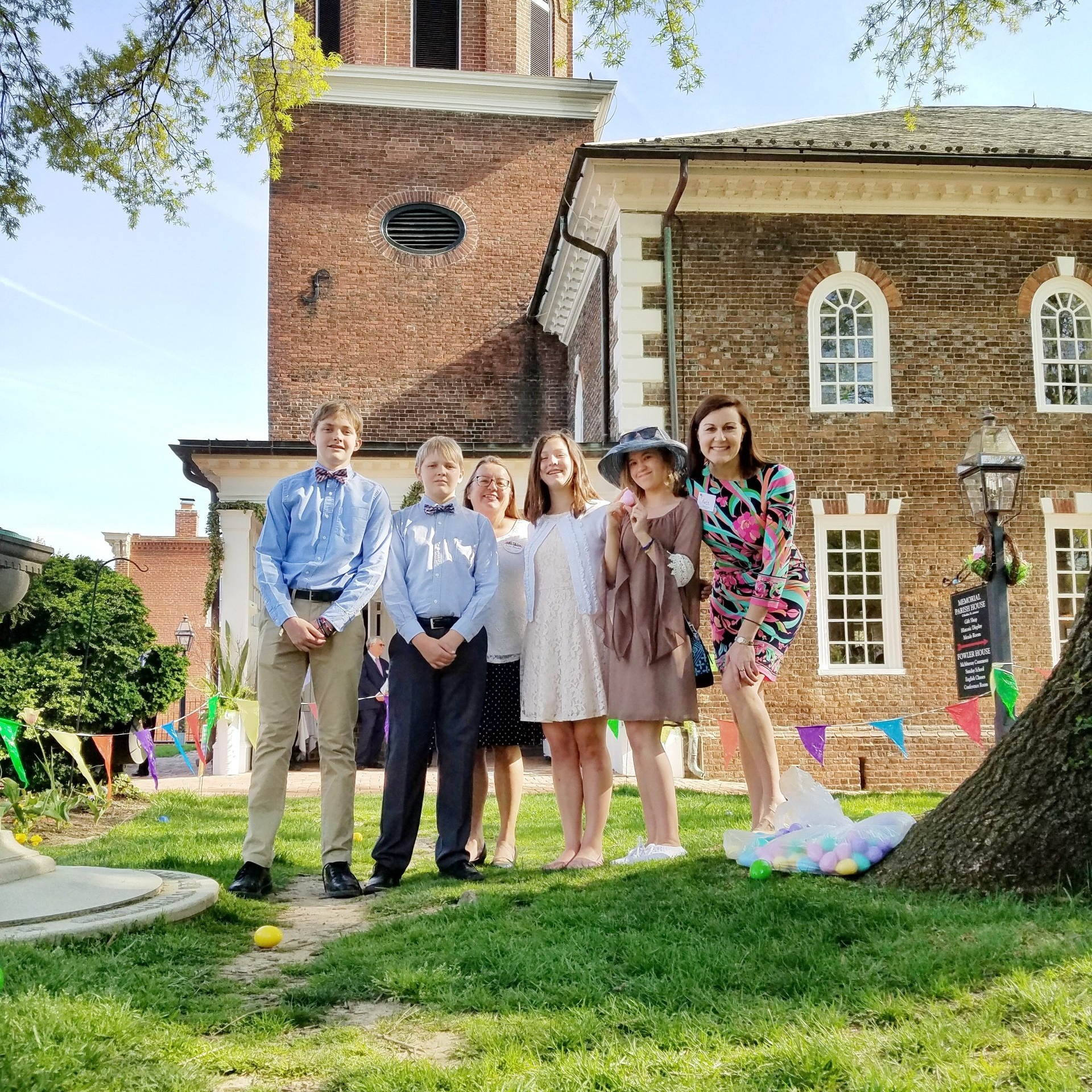
Anticipating Our Future
Christ Church embodies God’s unbounded love by embracing, liberating, and empowering people whoever you are and wherever you find yourself on your journey of faith.
Outreach and mission programs—both global and local—seek to bring social justice to all God wants us to serve. We are called to live out the gift of Jesus Christ’s unlimited love that brings transformation and new life to ourselves and to our brothers and sisters, especially those who suffer from poverty, violence, and injustice.
Our outreach and mission programs extend from helping the homeless and underprivileged of Alexandria to assisting abandoned girls in Honduras, mothers and children living with HIV/AIDS in Uganda, and the persecuted church in Sudan. We have diverse political, theological, and social views, but our rich heritage and deep roots give us enduring strength for the unified work we do in our local community and in the world.
We are an oasis for all who walk through our churchyard providing a quiet space for meditation, conversation, or simply eating lunch. Our worship services and special events are open to all. We find many visit for our history and then stay for our shared worship, fellowship, and service to others.
Join us anytime.

Anticipating Our Future
Christ Church embodies God’s unbounded love by embracing, liberating, and empowering people whoever you are and wherever you find yourself on your journey of faith.
Outreach and mission programs—both global and local—seek to bring social justice to all God wants us to serve. We are called to live out the gift of Jesus Christ’s unlimited love that brings transformation and new life to ourselves and to our brothers and sisters, especially those who suffer from poverty, violence, and injustice.
Our outreach and mission programs extend from helping the homeless and underprivileged of Alexandria to assisting abandoned girls in Honduras, mothers and children living with HIV/AIDS in Uganda, children in the Holy Land, and the persecuted church in Sudan. We have diverse political, theological, and social views, but our rich heritage and deep roots give us enduring strength for the unified work we do in our local community and in the world.
We are an oasis for all who walk through our churchyard providing a quiet space for meditation, conversation, or simply eating lunch. Our worship services and special events are open to all. We find many visit for our history and then stay for our shared worship, fellowship, and service to others.

